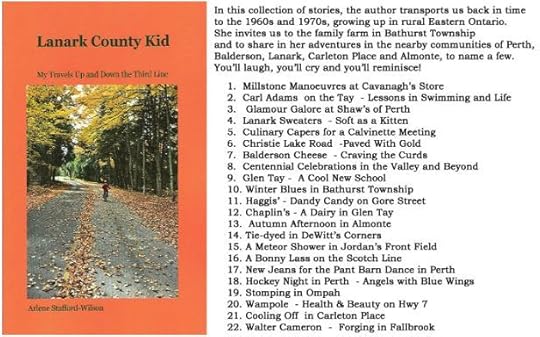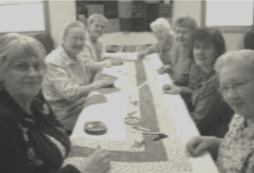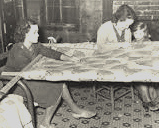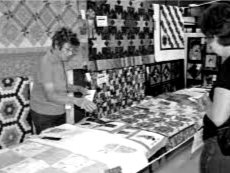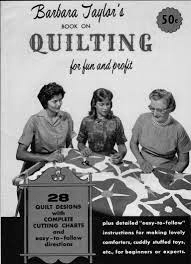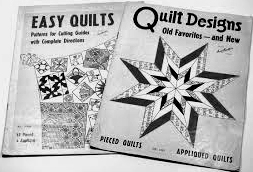Arlene Stafford-Wilson's Blog, page 40
October 13, 2021
The Witch of Plum Hollow
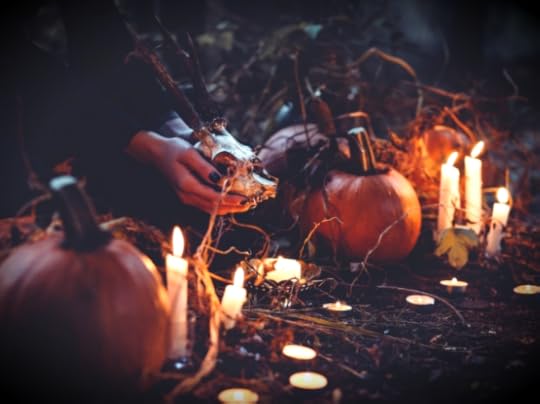
The readings always began the same way, with her visitors climbing the rickety wooden stairs to her cramped attic reading room. She motioned her guests to sit across from her, at a small pine table. A fresh pot of tea sat on the table, along with two cups. She’d pick up the pot, shake it vigorously, and pour a cup, watching as the leaves slowly sank to the bottom. Next, she swirled the tea around, poured the liquid back into the pot, then instructed her visitor to do the same.
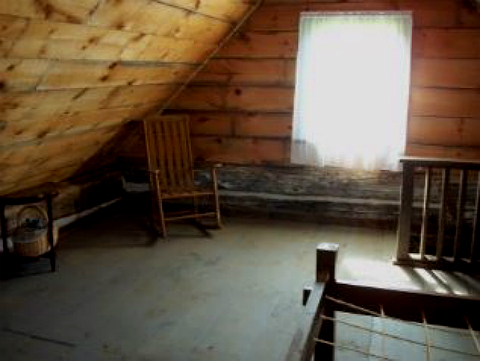
Jane Elizabeth Martin Barnes was a beautiful young woman, when she arrived in North America. She left her home in England after refusing to marry a man twice her age. Her father, a Colonel, had instructed her to wed his friend, an unattractive middle-aged soldier, and Jane would have no part of it. Instead, she fell in love with a handsome young man, Robert Harrison, and they left Britain together, married, and had a son.
Sadly, Robert died shortly after they settled in Ontario, and Jane was left alone to raise their baby.
Jane had a lovely slim frame, fair complexion, and bright eyes. It wasn’t long before she began to date again, and a young shoemaker, David Barnes, won her heart. They married, and settled near Lake Eloida, not far from Plum Hollow, about fifteen miles south of Smiths Falls, in Leeds & Grenville, Ontario. Jane and David had a large family – six sons, three daughters, and Jane took in three neighbourhood orphans after their mother passed.
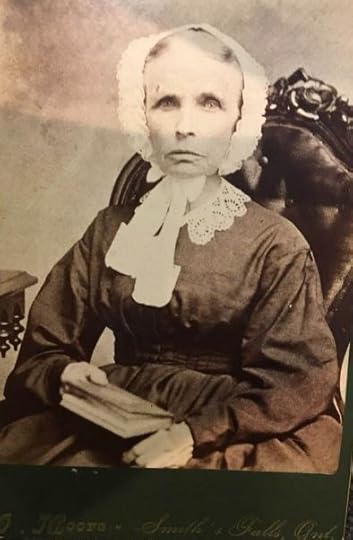
Jane’s husband David, was a bit of a wanderer, and he left her, abandoned the children, and moved to Smiths Falls. After her husband left, Jane’s son Williston ‘Ton’, and his family, moved into the little cabin with Jane, to offer her support.
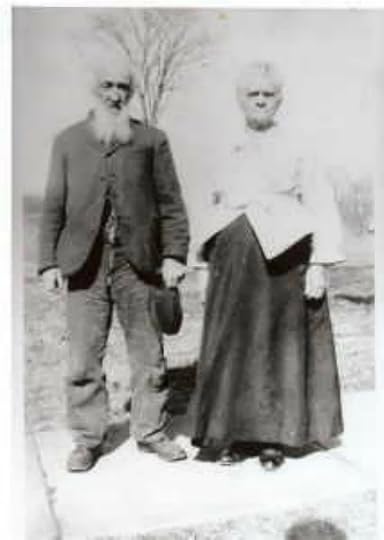

David Barnes, Jane’s estranged husband, moved in with their son Samuel Barnes, who had a home in Smiths Falls, and who later became Mayor.
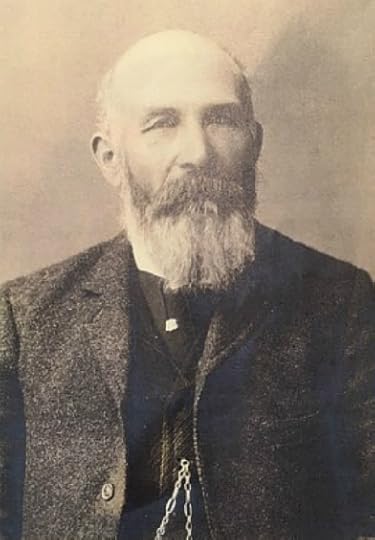
Samuel Barnes was among several other prominent business leaders who brought about the incorporation of the ‘Smiths Falls, Rideau, and Southern Railway Company‘, in January of 1898. The purpose of the incorporation was to construct and operate railways in, through and from the Town of Smiths Falls, in the County of Lanark.
The other members were James Maitland Clark, John Reeve Lavell, Alpheus Patterson, Richard Alexander Bennett, Matthew Ryan, Robert J. Brodie, Adam Foster, Robert Hawkins, George T. Martin, and Alexander Gray Farrell, all of the Town of Smiths Falls.
Samuel married Agnes Chalmers, and they had a large family of 10 children. Their youngest was Roy Barnes.
Roy Barnes in 1947, Grandson of Mother Barnes (Witch of Plum Hollow)
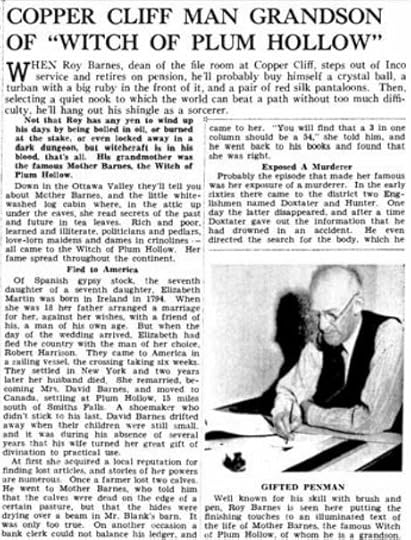

Jane, in need of an income to raise all of their children, began to read tea leaves.
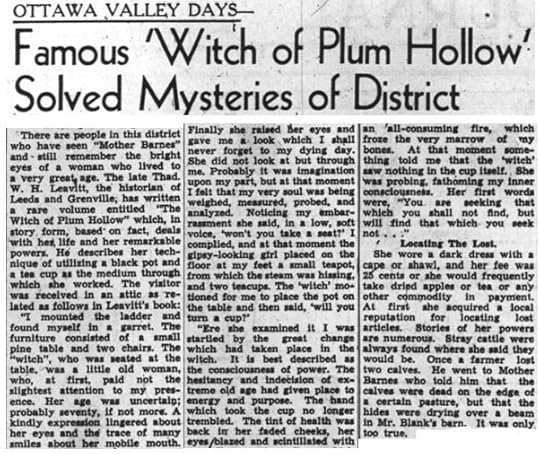
“This week, we present a story related by David Farmer, of Cumberland, who had actual contact with Mother Barnes, in his youth, and says her fortune telling was positively uncanny.”

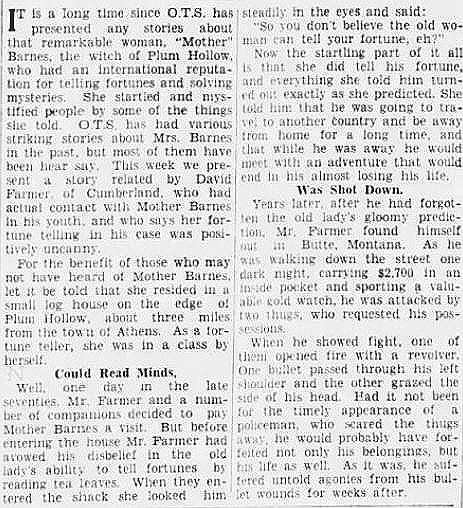
“He was a sound man, a solid man, a man who declared he couldn’t be carried away by the foolish capers of an old women; no sir, not he.”

Connections to the Joynt Family“Three generations of Joynt women, descendants of Mother Barnes – Lera Joynt, her daughter Carol, with Susan Joynt and Lisa Joynt, daughters of well-known farmer and auctioneer John Joynt.“I recall Grampa Samuel Barnes telling of hitching up the horses for the long ride from Smiths Falls to Plum Hollow.”, Lera reminisced.
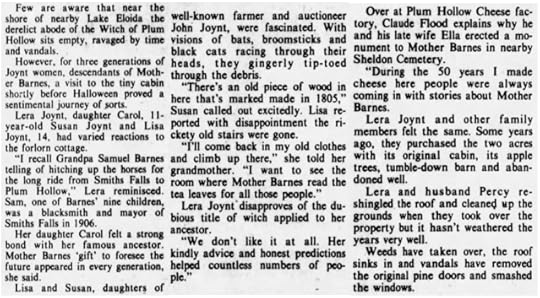
She predicted the return of a stolen wallet
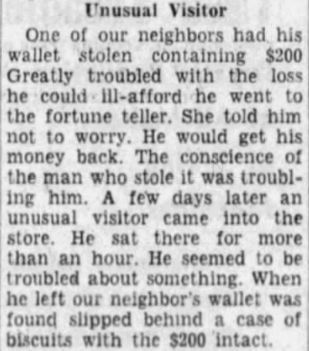
The Ancient Art of Fortune-Telling
In the late 1800s, telling one’s fortune by reading tea leaves became very popular.
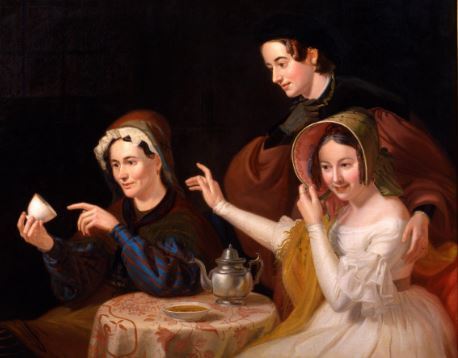
In those days, loose tea was used, and so the leaves at the bottom of the cup often formed shapes or patterns, and these were interpreted by the fortune-teller, to predict future events.
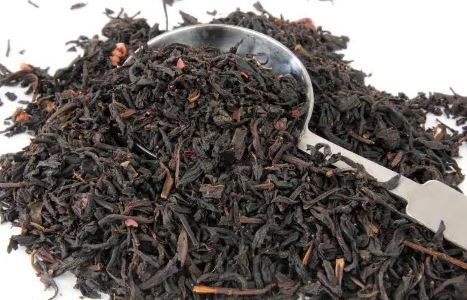
Loose tea was measured into a tea pot filled with boiling water. After the tea was consumed, the loose leaves lay at the bottom of the cup
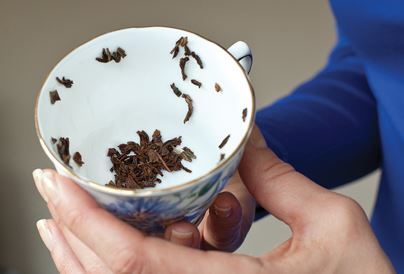
Then, the fortune-teller, or tea-leaf-reader, would interpret the meaning of the individual’s leaves.
Many believed that the position of the leaves in the cup itself, had meaning.


The images of the leaves in the cup were often matched with a series of standard symbols, used by many in the trade.
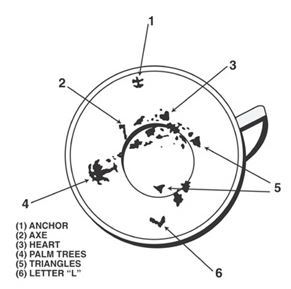
News of Jane’s accuracy in her predictions spread quickly, and she had visitors from neighbouring towns, cities, provinces, and even visitors from the northern states.
One of her most famous customers was the future Prime Minister of Canada, John A. MacDonald.

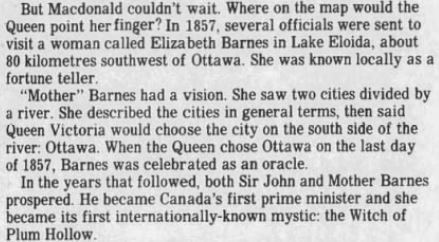
She located a lost deed, for the Jackson family
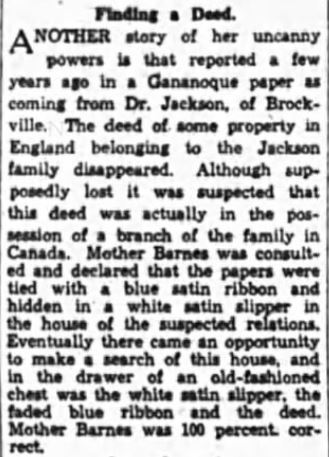
Albert Hudson, C.P.R. Engineer, was driving through the country, near Plum Hollow, and out of curiosity called upon the witch, and had his fortune told….“After I am dead”, said the witch, “you will lose a hand and part of your arm”
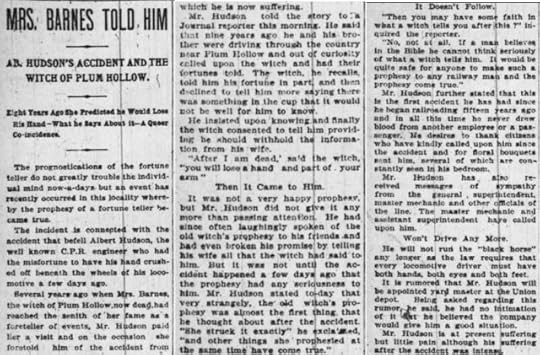
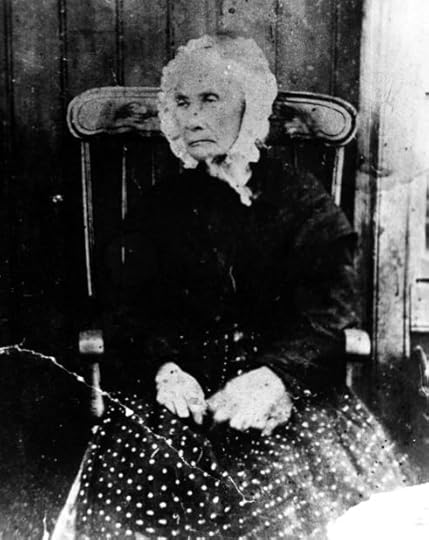
Interesting Career of Mother Barnes – ‘The Witch of Plum Hollow’By: Harry D. Blanchard, “The Athens Reporter”, Feb. 1936
“As promised, we shall, here and now endeavor to do justice to the memory of a lady of the old school, who truly had as keen and as well trained and as thoroughly disciplined an intellect as anyone of our day and generation in our beloved native county. We refer to our long ago departed and much respected fellow citizen, who was early known as “Mother Barnes”, who as her years increased was usually designated as “Old Mother Barnes” and who was unjustly, and with crude irreverence, spoken of by those who knew her least as “The Witch of Plum Hollow.” The Old Farmersville folk never called her by such a name, nor did any of her neighbours who knew her best, for all who were intimate with her respected her and treated her with deference. It is true that she had a sharp tongue, but the only folk who ever felt its stinging lash were those from far distant parts who at times came into her presence with boisterous demeanor. She was pre-eminently fitted to handle just such a case and in a few crisp quietly spoken, even gentle words, she promptly put the culprit in his place and engendered in his heart and mind an infinitesimally small estimate of his own worth and importance in affairs terrestrial and in divine matters of the spirit world. Such a smart visitor went away dazed and with a deep realization of the fact that here in the backwoods of Canada was a personality which dominated everyone and everything in a manner far transcending that of any of the national orators, preachers, politicians, lecturers, phrenologists and other celebrities then the vogue in New York, London, Paris. This characteristic, and her native ability to see right through everyone, and even turn their minds and thoughts inside out, after a few moments’ conversation: these two God-given attributes made Mother Barnes famous and compelled the people to beat a track to her door to her little tea studio up under the eaves, for many long years.
If anyone wishes to make a shrine of the old home of Mother Barnes, which would be a fitting way to perpetuate her memory, he can easily locate the house by turning north from Main Street, Athens, at Sydney Taplin’s old corner, now owned by Mrs. Avis Daniels Harte. He should then proceed along Elgin Street, past the Area Parish Memorial Park on his right, and so along Livingstone Avenue, past the Villa to the Guide-board corner. Here, he should turn neither to the left along Wright Avenue to Plum Hollow, nor to the left along Robeson Avenue to Hard Island. He should keep straight ahead north along Eliada Parish Avenue to Mother Barnes Avenue, which is the town-line between Yonge and Kitley. There, on the southwest corner is Mother Barnes’ old home, Lot 13, Concession 11 Yonge. Mother Barnes Avenue runs from Atkins Lake, north of Rockspring, through Eloida, all the way to Soperton.
Mother Barnes was born Elizabeth Martin. She was a dearly loved daughter of Col. Martin, of the British Army, but when she came of age, she ran away with the man of her choice, Sergeant Robert Harrison, coming to America in a sailing ship which took six weeks in crossing. Thus, having disobeyed the wishes of her parents, she was a stranger to them during the rest of her pilgrimage below, true to the then prevailing mode in English families of the military, clergy, and gentry class. Elizabeth ‘Jane’ Martin, and her husband settled in Cobourg, Upper Canada, where one son, Robert Harrison Jr., was born to them, who in later life became Colonel Robert Harrison, commanding officer of a regiment from Kansas in the American Civil War. Col. Robert Harrison died in Kansas, and his mother in her home, at the corner of Mother Barnes and Eliada Parish Avenues, had his pictures in full regimentals. After the death of her husband, Robert Harrison, the elder, Mother Barnes, then known as Mrs. Elizabeth Martin Harrison, married David Barnes, an American, by whom she had nine children. John and Thomas died in youth. Next came Lucy, born in 1837, who married Joseph Haskin, of Plum Hollow. They moved to Modale, Iowa, travelling in a covered wagon. After the death of her husband, Lucy married a cousin of our dear old neighbour, Horace Brown, of Farmersville. She last visited her Athens cousins in 1906 but died some years ago. Next, came Samuel Barnes, a blacksmith, who married Agnes Chalmers of Montague, near Smiths Falls, a cousin of our old chum, Will Chalmers. Their daughter, Mrs. Lily Barnes, still resided in Smiths Falls when the record was made a few years ago. It was in the home of Mrs. And Mrs. Samuel Barnes, Smiths Falls, that David Barnes, husband of Mother Barnes, died. The next child was David Barnes, also a blacksmith. He went to Iowa in early life and died there. Next came Margaret, who married Arthur Robeson, of Sharbot Lake, where she died. Next came George of Athens, who married Clare Kyo, of Watertown, N.Y., and died young. Next, came Williston Barnes, of Eloida, who married Lydia Compo. Last came Jane Elizabeth Barnes, (Janie) born March 1st, 1847, who was the wife of our very popular old neighbour, Charlie Wing, of Farmersville. Mrs. Wing died Nov. 10, 1910. In one of our stories we described the home of Mr. and Mrs. Wing, on Elgin Street, which was one of the neatest, best kept and most attractive in the village. An adopted daughter of Mother Barnes and her husband David was Bella Sheldon, who was the wife of our cheerful old neighbour, Erastus Livingston.
And now we feel better, for we have completed a pleasant task, which has confronted me for a long time. We wanted to do justice to Mother Barnes, but it is not until now that we have been able to get around to it. We think that our good friend, Prof. Fred Lawdon, of the Historic Sites and Monuments Board, should see to it that the site of the old home of Mother Barnes is suitably marked for the enlightenment of posterity. Canada has never had as one of its citizens a lady of stronger character or keener intellect than Mother Barnes and this brief story of her life, which will be permanently preserved in the Canadian Archives, should be called to the attention of posterity by a suitable marking of the place of her residence and the centre of her activity, her old home near Lake Loyada (Eloida). Thus, Elizabeth Martin, a daughter of the gentry of England, lived among us for three-quarters of a century. What did she think of us? If she had put her impressions in the form of a book, it would now have an enormous sale.”
She predicted the location of money stolen from a resident of South March
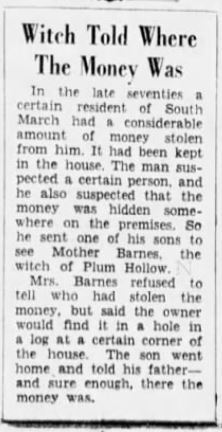
“She helped local police solve a murder.”
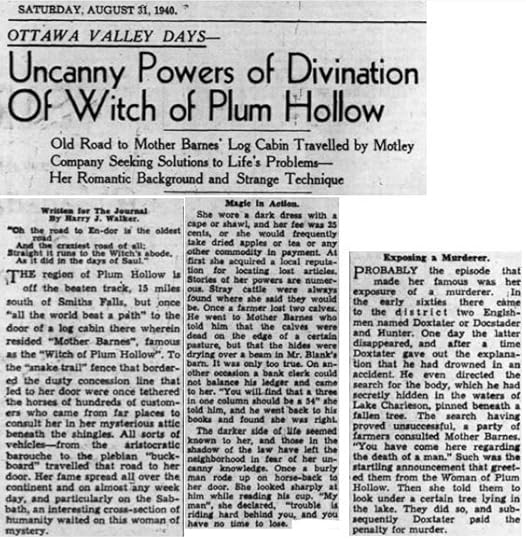
During Jane’s time telling fortunes she was able to find missing objects, missing farm animals, and even missing people. Jane’s predictions were so accurate that even the police called on her to assist them from time to time. She even had a few very famous customers, in the many decades of her practice, in that little cabin in the country.
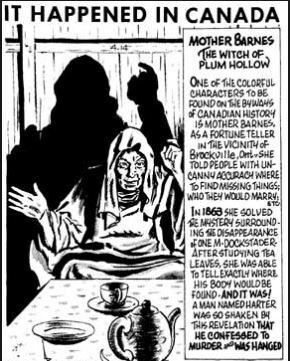
As the decades passed, news about Jane’s gift for predicting continued to spread far and wide, and there were often carriages lined up down the road near her little cabin.
“It was alleged by many, that Mrs. Barnes could tell all about a person, a hair from whose head was presented to her.”
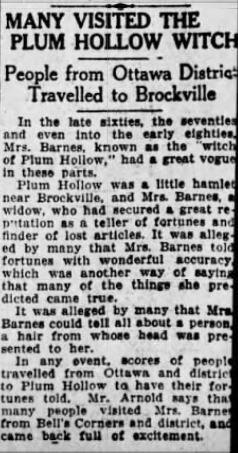
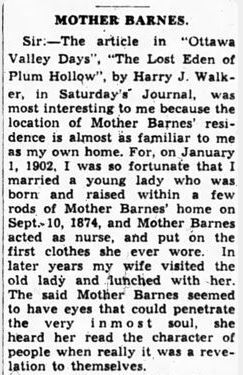
“Kelly’s grandmother took his father to visit the witch in 1883. The cabin was guarded by ferocious dogs, and he climbed a rickety ladder to the second floor…..”
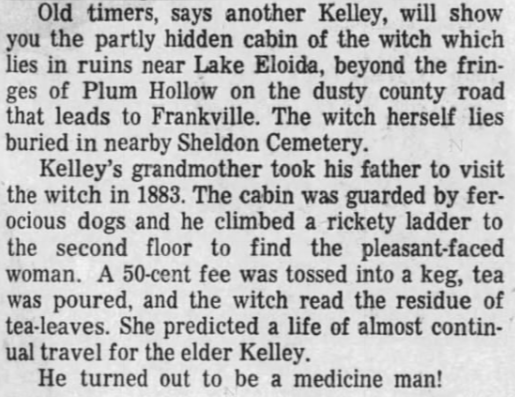
“Mother Barnes predicted deposits of silver on the farm of Lupton Wrathall, Lot 15, Con. 6”
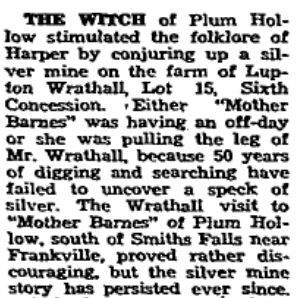
Young people went to Jane, to ask advice on their love lives, and she was able to predict who they would marry. If any of the neighbours misplaced anything, they walked to Jane’s little cabin and she would tell them exactly where to look. Farmers went to Jane when their cattle or horses wandered off, and she always directed them to precisely the right spot. Business people consulted Jane for advice on their professions, and politicians sought her advice on elections and policies.
“The walls in the little room downstairs, were closely covered with the names of people from Canada and the United States, who had come to have their fortunes told.”
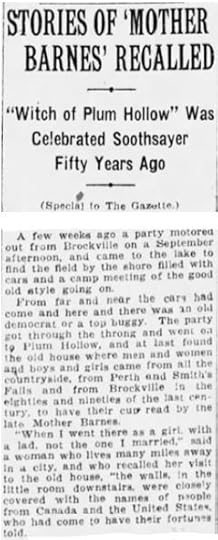
She predicted her own horse’s death
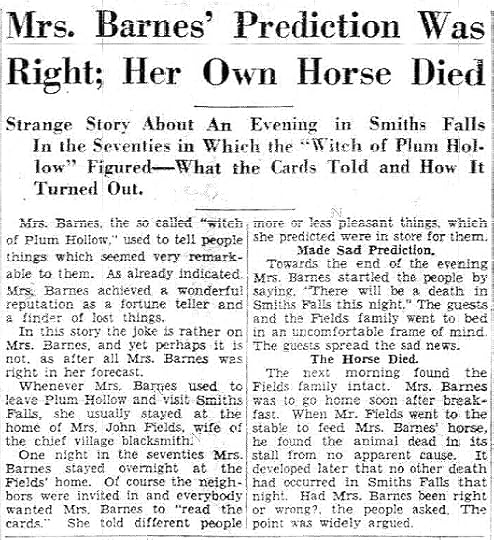
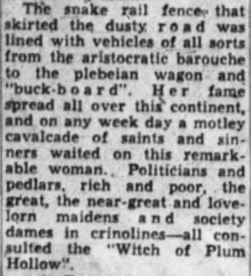
“After paying a nominal fee to the old lady, McLaughlin told his story, then sat back, while she consulted her cards.”
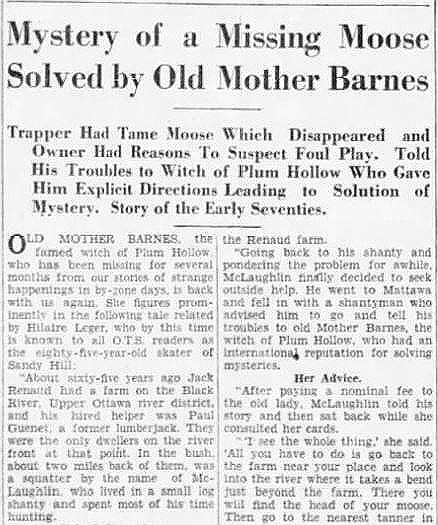
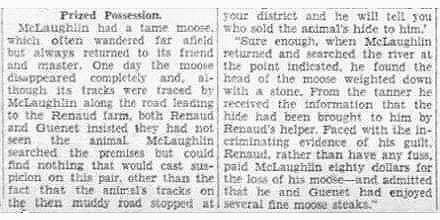
“Why do they come to see her?What do they seek?
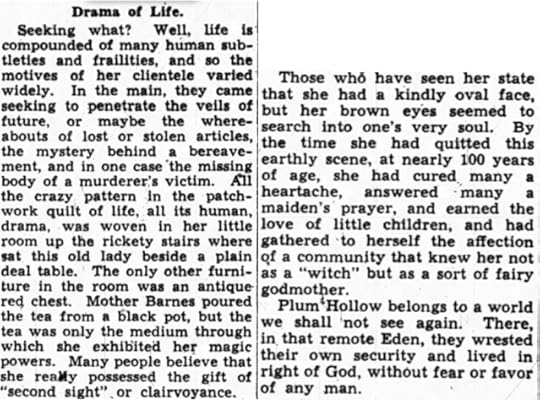
Jane’s tiny cabin fell into disrepair over the years, and was listed for sale in 2004
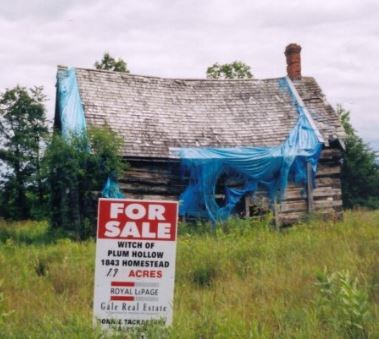
Eloda Wachsmuth Buys and Repairs Jane’s Little Cabin
Eloda Wachsmuth, of Navan, Ontario, purchased the cabin in 2005, and invested $35,000 to restore the home, using much of the original logs and lumber in the restoration. Eloda wanted to preserve the history of Jane Barnes, so that she would be remembered.

By the fall of 2007, the cabin was restored, and it was Eloda’s intention that it would be open to the public, so they could learn about Jane Barnes and her years spent as a well-known fortune-teller.
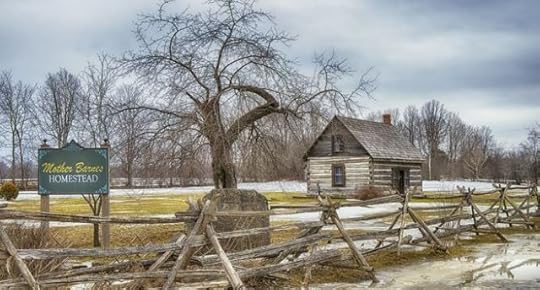
Mother Barnes, as she was affectionately referred to in Leeds, lived a long life, and passed away, at the age of 90, in that same little cabin, where she had shared her predictions over the years.


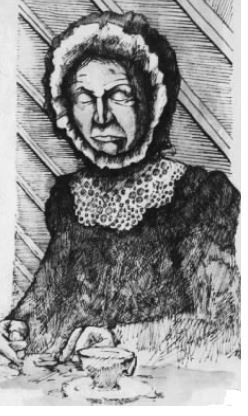
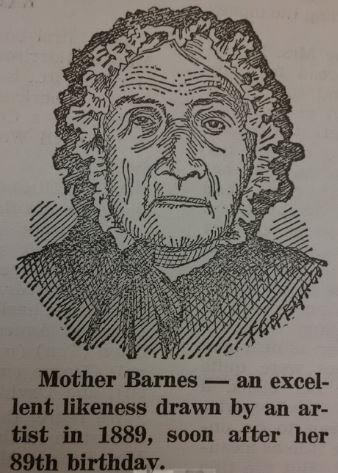
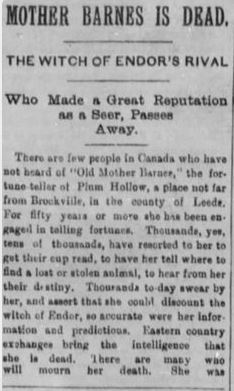
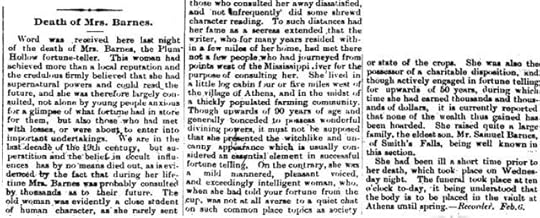

Jane is buried at the Sheldon Cemetery
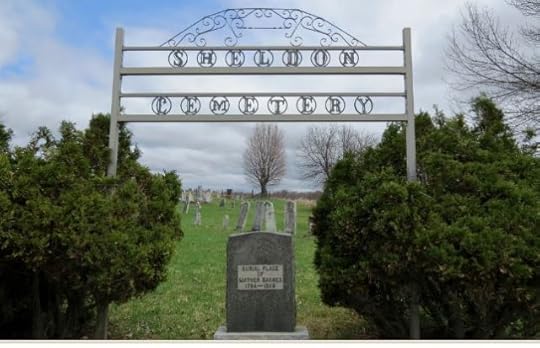
When Jane passed, she was buried in an unmarked grave.
Plum Hollow cheese-makers from 1924-1974, Claude and Ella Flood, erected a stone in memory of ‘Mother Barnes’. (note: the dates on the stone are incorrect)
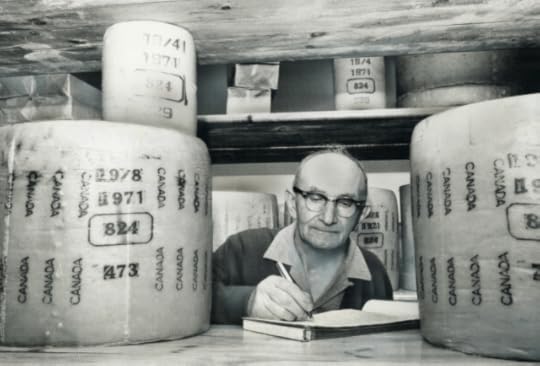
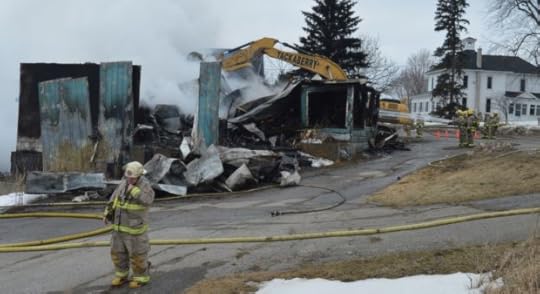
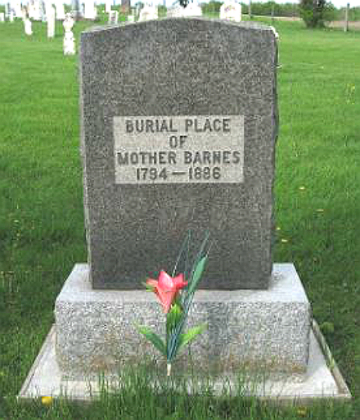
Robert J. Harrison Jr. 1829-
John Barnes 1831-1832
Margaret Barnes 1832-1891
Thomas Barnes 1833-1857
Lucy Barnes 1836-1929
Samuel Barnes 1837-1922
David Barnes 1840-1923
Williston Barnes 1845-1920
George Barnes 1846-1906
Jane ‘Janie’ Barnes 1847-1910
Bella Sheldon 1853-1935
Descendants of Mother Barnes:Jane had a large family, including three adopted children.
Her son David Barnes died in infancy, age 1, and her son Thomas Barnes lived only until age 24.
Her eldest daughter, Margaret ‘Maggie’ Barnes, at the age of 52, married James Robinson.
Her daughter, Lucy Barnes married Metcalfe Peer, Joseph Haskin, and Alva Brown
Her son, Samuel Martin Barnes married Agnes Chalmers
Her son, David Barnes married Fannie Ryel
Her son, Williston ‘Ton’ Barnes, married Lydia Compo
Her son, George W. Barnes married Clarissa ‘Clara’ Kio
Her daughter, Jane, married Charles Wing
Other surnames in ‘Mother’ Barnes family: Bell, Joynt, Cooper, Goodwin, Williams, Buchanan
………………………………….
Discover the fascinating story of Jane Barnes, and her years as a local fortune-teller. Find out about some of Jane’s most prominent and famous customers. Who were the high-profile movers and shakers who sought Jane’s advice on a regular basis? Read about a grisly murder case that perplexed police, and was finally solved by Jane. Who was the famous and controversial newspaper publisher who sent his wife to ask Jane’s predictions because he didn’t want to be seen visiting a ‘fortune-teller’. Learn about the case of a poltergeist in Quebec, where the family seeks Jane’s help in solving the violent and frightening haunting of their house. Discover these stories and more, in the book:“Lanark County Calling: All Roads Lead Home”, the complete story of Jane Barnes, a gifted lady, also known as – ‘The Witch of Plum Hollow” ISBN 978-0-987-702661
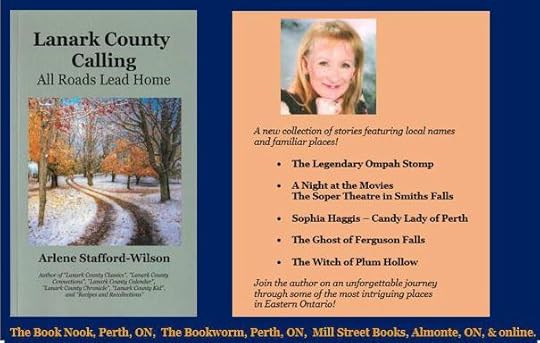
October 7, 2021
Thanksgiving at the Stafford House
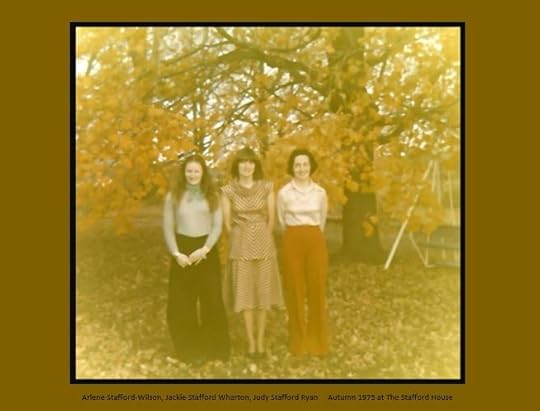
Thanksgiving
at the Stafford House
Everyone came home…..if they could. By the mid-1970s Tim and Roger were both in the O.P.P., which meant they weren’t always able to be there for family holidays. Judy and Jackie were busy with their careers, and I was at the Perth High School, trying to figure out what I’d do when the time came for me to try my luck in the world.
The setting was postcard-perfect. A big red brick farmhouse, with enormous maple trees displaying their kaleidoscope of fall colours. At the back of the house a dozen McIntosh apple trees stood, branches hanging low, loaded with ripe red fruit. By October it was warm in the daytime, and cool enough at night for local farmers to fire up their wood stoves. The rich scent of wood smoke drifted across the fields and was the perfect fall incense.
As we gathered together, the old house was filled once again with our pockets of conversation in the kitchen and living room. Dad and the boys were always talking about cars, and Mother discussed her menu with us, assigning our jobs – “fill up the pickle dish”, “pour the tomato juice into the small glasses”, “fold the napkins….diagonally across”.
In the evening after the meal there were games – sometimes cards, or maybe Monopoly. There were jokes and laughter, and unguarded conversations sprinkled with the news of the day, and our hopes for the future.
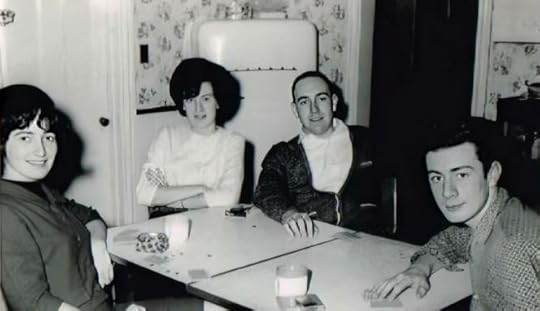
left to right – Judy Stafford, Jackie Stafford, Tim Stafford, & Roger Stafford (the kitchen at Stafford House)
Mother’s homemade stuffing was a holiday favourite. (recipe below) This old family recipe was her mother’s. Granny Rutherford’s father owned a butcher shop – the Canterbury Meat Company, in Huddersfield, England, and savory ground sausage meat was the key ingredient to their traditional stuffing, along with dried bread crumbs and seasonings.
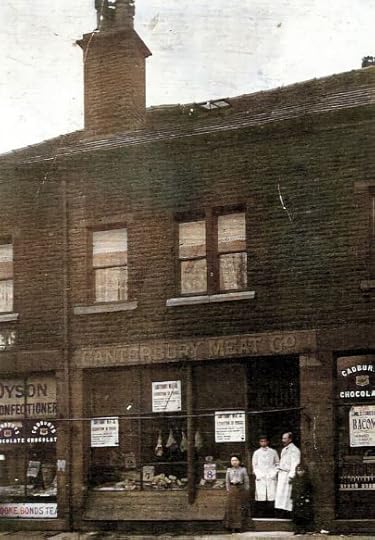
Canterbury Meat Company, 15 Market Street, Huddersfield, England, 1906

Traditional Sausage Dressing
There were lots of Thanksgiving favourites – the homemade pumpkin pie baked in Mother’s light, flaky pastry, the farm-fresh buttery mashed potatoes drizzled with velvety seasoned gravy, smooth buttered turnip, and light homemade rolls, fresh from the oven.
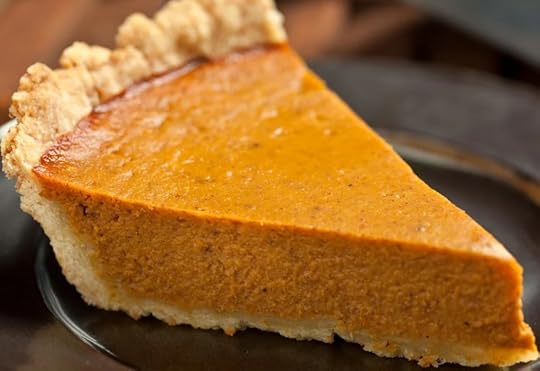
There would be many decades of Thanksgivings at the Stafford House on the 3rd Line of Bathurst. The setting was always the same – the sturdy welcoming red brick house, a spectacular backdrop of maple leaves in orange, red and yellow, as far as the eye could see. The sounds were always the same – the pots and pans clanging and clattering in the kitchen, Dad’s soft melodic voice sharing a joke or story with the boys, and the girls talking about the latest fashions, or a dreamy new movie star. The unforgettable scents of autumn were the same outside – the dried leaves on the ground, and the sweet McIntosh apples hanging low on the trees behind the house. Inside the scent of turkey filled the air for hours, along with the aroma of the sausage meat, and the homemade rolls baking in the oven.
Those special Thanksgivings still live in our hearts and in our minds – the times when we were all together, back in the old house, enjoying a special meal made with love for all to share, the warm smiles and the laughter, walking through the yard, under the colourful sprawling maples. We were home again.
….
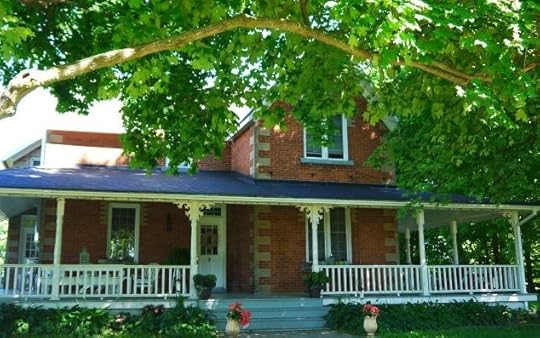
Stafford House
Granny Rutherford’s
Sausage Dressing:
1 lb of sausage meat
2 eggs
1 cup hot milk
7 cups bread crumbs
1 c chopped celery
2 Tbsp chopped onions
1 Tsp salt
4 Tbsp parsley
1/2 tsp of poultry seasoning
Method: Fry meat until brown, drain off fat, add the eggs, hot milk, and the rest of the ingredients
Mother stuffed the turkey cavity, and any extra stuffing was wrapped in aluminum foil and baked in the oven.
Enjoy!
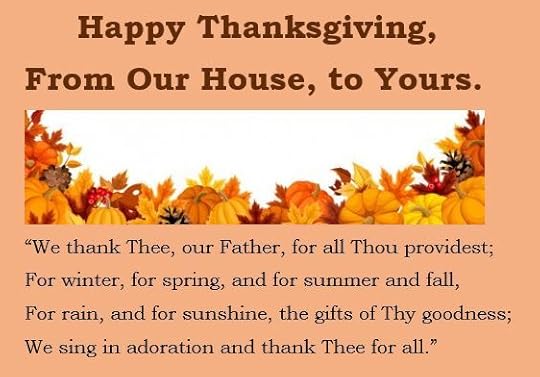
Granny Rutherford’s sausage dressing recipe from: “Recipes & Recollections: Treats and Tales from Our Mother’s Kitchen” ISBN 978-0-9877026-09, page 49.
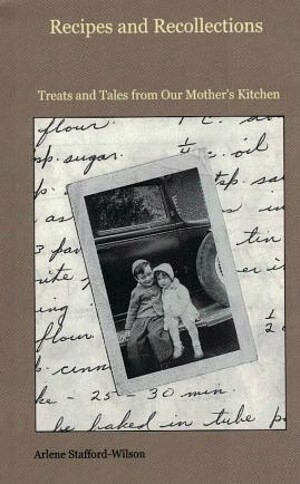
(kids featured on the cover of the book: Tim Stafford and Judy Stafford, photo taken in 1947)
October 6, 2021
Irish Wakes
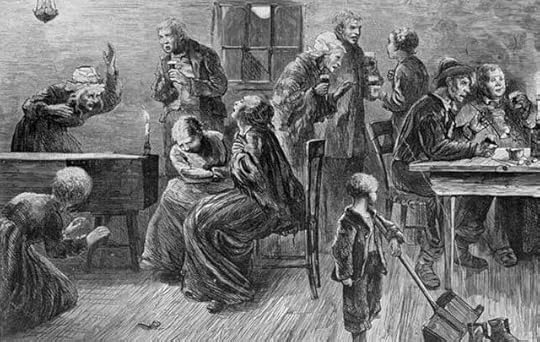 Depiction of an Irish wake – 1873
Depiction of an Irish wake – 1873Traditions of the Irish Wake
“The terrible thing about dying is
that you miss your own wake”
David Allen, Irish Comedian
Traditions seem to go on forever in small rural communities. They are passed down from father to son, and from mother to daughter. The tiny community of Ferguson Falls was settled by seven Irish bachelors and their story was told and re-told through the ages, so it wouldn’t be forgotten. When these young men landed from the old country in the early days they made a pledge to help each other to succeed in the new land, and if even one of them failed to thrive they would all return to Ireland. They were Patrick Quinn, John Quinn, James Carberry, William Scanlan, Terrence Doyle, John Cullen and James Power.
Around the same time my own ancestors arrived – the Stafford and the McGarry families, from County Wexford and County Westmeath, and the Irish-Catholic community grew and prospered in this idyllic community along the Mississippi River in Drummond Township.
In those days it was unusual and even frowned-upon to marry outside of one’s religion, and so the traditions and customs brought from the old country remained firmly entrenched in these early settlers and their families and were passed down for generations. It’s not surprising that many of these practices were still taking place in the 20th century, some with pagan Celtic origins, some more religious, and some so ancient they could no longer be explained.
As a young girl I heard stories, mostly from my father, who grew up near Ferguson Falls, and also some vivid tales from some of the old timers in the area. Some of their most colourful accounts included stories about their Irish wakes.
I remember my father telling me about his uncle’s wake, held in the family home, as was the custom. He said that the wakes were another excuse for people to get drunk, maybe a little drunker than usual, and they did some things that were almost unspeakable. He recalled his deceased relative being ‘laid out’ on the dining room table and that late at night two of the intoxicated guests attempted to pour whiskey down the dead man’s throat.
I also heard from one of the old-timers, a direct descendant of one of the seven Irish bachelors, that the standard rate to dig a grave was a bottle of whiskey. The usual amount was twenty-six ounces and was split between two men, who dug the graves by hand at St. Patrick’s cemetery. He was, in fact, according to him, one of the two who dug the grave for my great uncle Jimmy Richards, and the lads were paid in the usual way, a bottle of whiskey, from my great aunt Tessie Richards, the departed’s sister.
The ‘Third Birthday’
The eldest ones used to refer to death as ‘the third birthday’. They claimed that the first birthday was the day you were born, and the second birthday was your baptism. The third birthday is the day you pass away, and should be filled with both mourning and celebration as you move from this life and enter Heaven.
Stop the Clocks
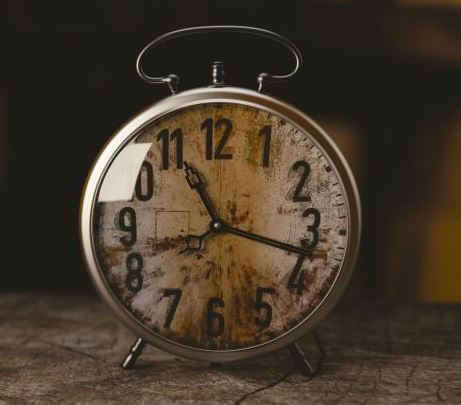
All clocks in the house are stopped at the hour of the death as a sign that the passage of time has ended for the departed. Time stands still for them, and a new period of existence begins, without time. It was believed that if time continued to move ahead that this invited their spirit to remain in the home rather than moving on. Some say it was also a way to mark the time of death. Others claimed it is done so mourners will stay as long as they please without worrying about the time.
The Open Window
Immediately after the death, the window closest to the deceased is opened for two hours. The open window allows the spirit to leave the body. No one must stand near nor block the path to the window as it might prevent the spirit from leaving, and will bring misfortune to any person who blocks it. After two hours have passed the window is closed so that the spirit doesn’t attempt to re-enter the body.

Close the Curtains
With the exception of the open window closest to the deceased, all other windows are to be closed, and the curtains should be drawn until the body is removed from the home for burial. It was thought that if a moonbeam shone through a window at night that evil spirits could come in and try to steal the deceased’s soul.
Photographs Turned Face-Down
Family photographs were turned face-down so that the people in the pictures would not be spirited away with the deceased.
Cover the Mirrors
All of the mirrors in the home were either covered with cloths, or turned backward, facing the walls. There were two reasons behind this custom – that the deceased’s spirit doesn’t see their physical body in the mirror as they leave the home, and so that their spirit doesn’t get trapped inside the looking glass.
Mourning Cards
In the old days people kept black-bordered funeral stationary in their homes. Shortly after the death occurred, they wrote an announcement by hand, on a full sheet, enclosed it in black-bordered envelope and pinned the notice with a thumb-tack to the outside door. A black ribbon was also hung on the door. Neighbours could stop and read the announcement and learn of the date and times of the wake and funeral. A note at the bottom of the page encouraged neighbours to spread the news. A call was placed to local printers to order formal funeral cards, which included information about the deceased, and sometimes a photo or a prayer. The Mourning cards were also known as Prayer cards or Holy cards. Local newspapers were called and orders for obituaries were placed. The Mourning cards were available at the wake and at the funeral and given as a keepsake for the mourner to bring home with them.
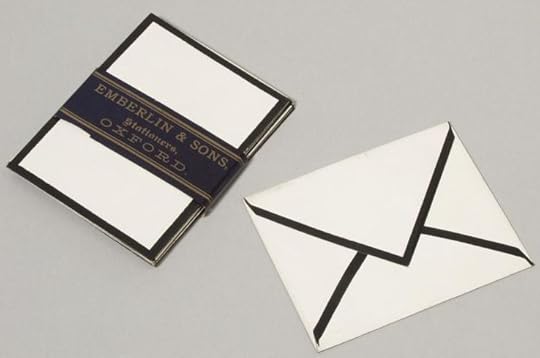
Traditional Mourning stationery
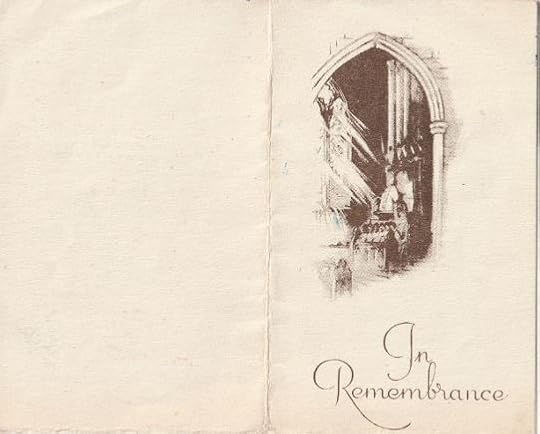
Mourning card – Anastasia ‘Stacy’ Richards Stafford (my grandmother) 1954
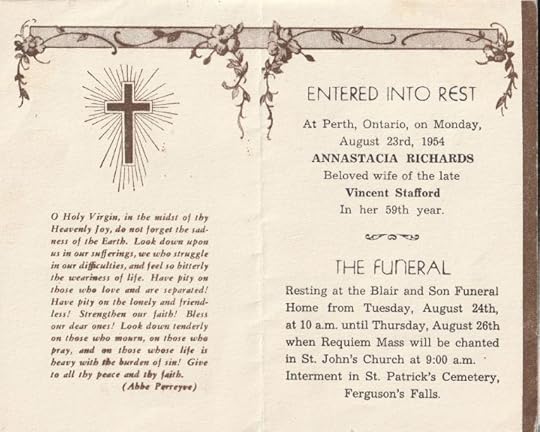
Anastasia ‘Stacy’ Richards Stafford – Mourning card – 1954
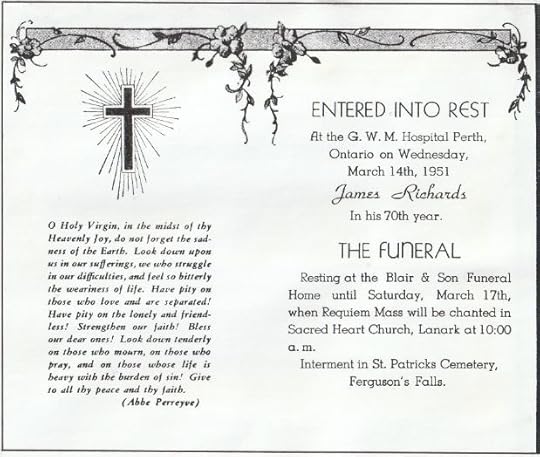
James ‘Jimmy’ Richards – Mourning card – 1951 (Jimmy, my great-uncle, was a farmer in Ferguson Falls and well-known local musician who regularly played his fiddle at the infamous Stumble Inn)
Preparation
The body of the deceased was washed with Holy water, and dressed in their best clothing. There were often older women in the community who performed this task for the families, and were offered whiskey or food as payment and thanks. Men were shaved and both men and women had their hair combed and arranged nicely. Conservative dress was expected for the deceased and bright or pastel colours were not considered appropriate. The bodies were laid out on top of white sheets, usually on a long flat surface, such a dining room table. In Catholic homes rosary beads would be wound around the hand, with the crucifix laying on the person’s chest, close to their hearts. Once the body was prepared the deceased was never left alone in the room. At least one person must remain, and usually there were groups of people who remained awake through the night with the dearly departed. This custom of remaining awake is the origin of the term ‘wake’.
Candles
In some families white candles were placed all around the table where the deceased was laid out, however some families used only 4 candles placed around each of the four corners of the table. Candles were to remain lit (replaced as needed) until the body left for the funeral. It was bad luck to let one of the candles burn out and they were replaced as they burned down close to the end of the wick. The candles used at wakes were said to have healing powers, and the butts of the used candles would be saved and rubbed on burns and cuts.
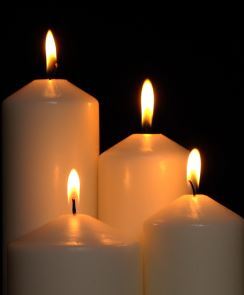
Keening
Keening comes from the Gaelic word meaning ‘to cry’. Women from the neighbourhood would gather at the wake and sob. There were even professional keeners who could be hired to cry at wakes. The art of keening originates from the Irish Banshees who shrieked and screamed foretelling a death. It’s been said that every family of Irish origin has their own Banshee, and that they even traveled with families across the ocean to the new world.
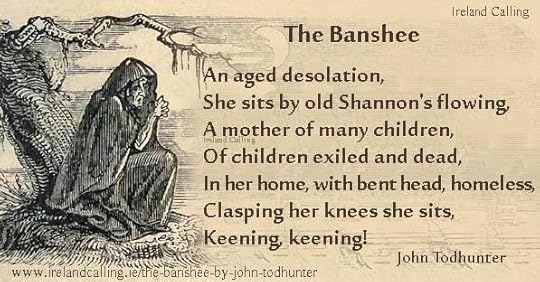
John Todhunter, Ireland Calling
What to Expect
If you’re planning to attend an Irish wake, then be sure to bring a little something for the family. Food, flowers or something to drink is always welcome, and a bottle of good spirits is always appreciated.
Although there is no dress code, wearing black or somber colours is a sign of respect to the family.
After a brief viewing of the deceased, you may pay your respects to the family with a few words, like: “Sorry for your troubles.”, or “Sorry for your loss.” It is a stressful time, and it’s not as important what you say, but more that you showed respect by attending.
The time you spend at the wake can be brief, as little as fifteen or twenty minutes, if you didn’t know the deceased very well. The busiest time will be the evenings, after suppertime, between 5 p.m. and 8 p.m. Neighbours, good friends and family members will remain at the wake for four to five hours, and the closest will stay all night, at least one night, in the room where the deceased is laid out.
The Food and Drink
After the wailing is over, the more social aspects of the wake begin. Food and drink for visitors are provided by the family, and it is customary for guests to bring a bottle of spirits, or some food for the wake. Shepherd’s Pie, Irish Stew, Corned Beef and Cabbage, cold cuts, and small sandwiches are common at wakes. Tea is served in fine china cups, and whiskey, beer, and wine are the most popular drinks, although any spirits will do.
Raise a Glass
It’s customary during the wake to raise your glass and toast the deceased. You might begin the toast by telling a little story about your friendship, or something amusing that happened, that the two of you shared. Some of the most popular Irish toasts at a wake: “May he rest in peace.”, “Gone, but not forgotten.”, “No one spread more love in a lifetime.”, “To absent friends.”, “To our friend who has gone on before us.”
The Smoking of the Pipe
A long-standing tradition is the custom of smoking from clay pipes. These small pipes were filled with tobacco for visitors to the wake house to take. Visitors lit the pipe and took a draw, exclaiming “Lord have mercy on their soul”. Non-smokers were also expected to partake of the ritual and in some cases snuff was also taken. After the funeral, the family broke the wake-pipes in two and buried them outside.
The Story-telling
It wouldn’t be a proper Irish wake without telling stories or reciting poems about the dearly departed. Fond memories are shared and become more animated and exaggerated as the whiskey flows throughout the days and evenings. There are stories of the school years from former classmates, and stories of the departed’s years of work, and about their profession. Family stories and memories are shared with guests, with highlights of a life well-lived, and special anecdotes of their days on the Earth. Fiddles and flutes are played and songs are sung, jigs are danced, and stories continue throughout the days and evenings.
At midnight, the Rosary is said, concluding with: “Pray for us now, and at the hour of our death.” The neighbours, friends, and other guests leave the home, with only those closest to the departed remaining.
Some family members and dearest friends will stay all night in the room with the deceased. The stories and the drinking will continue overnight, and a new group will relieve them in the morning so they can get some rest. It is usual to wake for two to three nights before the funeral.
The Funeral
On the third day of the wake, the body is placed in a coffin and carried out of the home, always feet first, in order to prevent the spirit from looking back and beckoning another member of the family to join them.
Once the departed has been carried from the home, the mirrors are uncovered, the curtains pulled back, and the photographs are displayed again.
Exactly six pallbearers carry the coffin, and there should be 6 handles on the casket, three on each side, in remembrance of the Holy Trinity: Father, Son, and Holy Ghost. It isn’t always the case these days, but that is the Irish tradition. It is also thought to be bad luck to go home the same route as the one used by the funeral procession.
The funeral is usually held in church, and after that everyone proceeds to the cemetery. A short graveside service will be conducted by the priest.
Rain is a Blessing
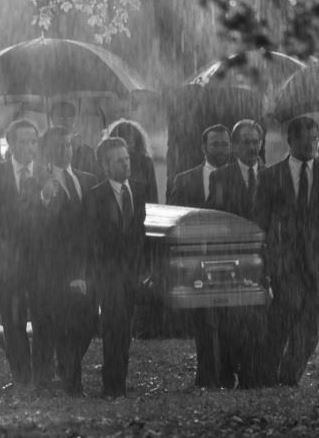
Rain the day of the funeral is a sign of a blessing, and if you hear a thunder-clap it means that the deceased has arrived in heaven.
After the funeral, everyone will be invited back to the house, to a bar, or community location for some food and drinks to toast to the deceased and honour their memory together for one last time.
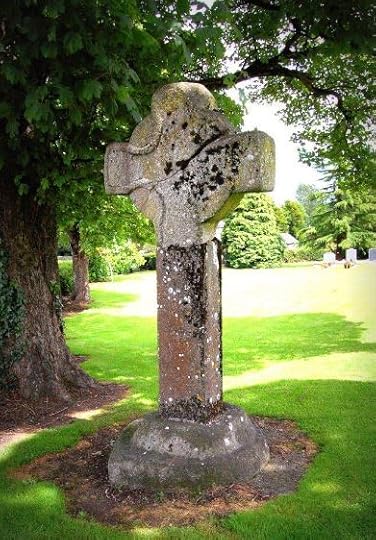
Many of the traditions of the Irish wake live on today, depending on where you live. Some customs have been adapted for modern times, and some of the old ways passed down through families, are strictly followed, as they were in days gone by.
“Grant them eternal rest, O Lord,
and may the souls of the faithful departed,
through the mercy of God, rest in peace.
Amen.”

St. Patrick’s Church, Ferguson Falls, Ontario, Canada, est. 1856.
“But since it fell into my lot
That I should rise and you should not
I’ll gently rise and softly call
Good night and joy be to you all
So fill to me the parting glass
And drink a health whate’er befalls
Then gently rise and softly call
Good night and joy be to you all.”
“The Parting Glass”, written by Trad / David Anthony Downes
About the Author:
Arlene Stafford-Wilson was raised on a small farm in Bathurst (Tay Valley) Township. Her Stafford and McGarry ancestors left southern Ireland, and arrived in Lanark County in 1816. She also descends from the McKittrick, Waters, Doyle, Carroll, Richards, and O’Keefe families, also from southern Ireland.
Author of nine books, member of the Lanark County Genealogical Society, member of the Association of Professional Genealogists, and mother of one son, Alexander, she and her husband, Kevin, live in Ottawa, a few blocks from Parliament Hill.
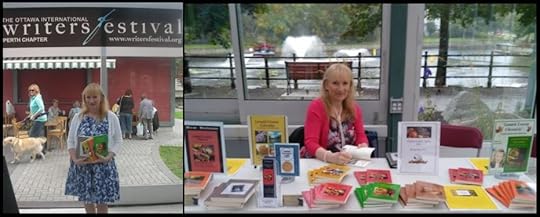 Arlene Stafford-Wilson
Arlene Stafford-Wilson

Sources for “Irish Wakes”
Delaney, Mary Murray. Of Irish Ways. Dillon Press, Inc, 1973
Staffords Funerals, website, Dublin, Ireland
Bourke.A (1988), The Irish Lament and the Grieving Process, Women’s Studies International Forum, Vol.11, No.4
Danaher.K (1962), In Ireland Long Ago, Mercier Press.
Lysaght.P (1988), Caoineadh os Cionn Coirp: The Lament for the Dead in Ireland, Folklore 108.
September 30, 2021
North Lanark Regional Museum – A Special Visit

A colourful carpet of leaves, stretching as far as the eye can see, reminds us that we are in Lanark County’s maple-country. The sweet, delicate, liquid, flows from the maple trees each spring, one drop at a time, and after boiling, becomes the legendary Lanark County Syrup, drawing tourists to the area, year after year.
Today, we are visiting the North Lanark Regional Museum, a former one-room school-house. At one time, many decades ago, this long-established building served the children from the local community of Appleton.
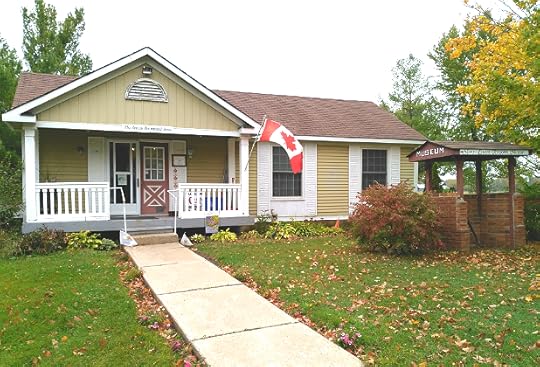
This well-kept building holds an abundance of historical treasures from the past within its walls; silent echoes of the pioneers settlers who cleared the land, built their homes, and laid the foundations for future generations.
Our visit began with a delightful private tour of the collection, given by Ed Wilson, President of the North Lanark Historical Society. Our first stop on the tour was a vintage telephone switchboard, complete with chair and headset. This relic from the past highlights just how far our technology has advanced, since the early days of switchboards, and multi-family party lines.

Our next stop was the Post Office, where Ed pointed out a couple of highlights, like the list of former Post-Masters, and an old set of scales that showed the prices to mail an item, according to its weight.
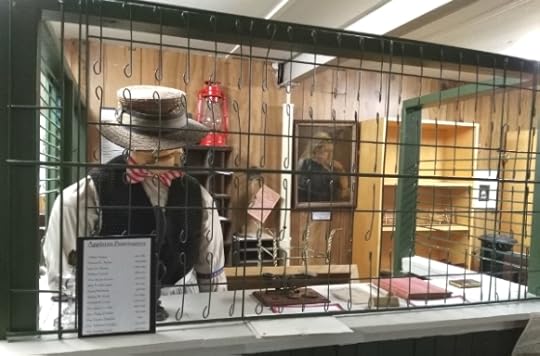
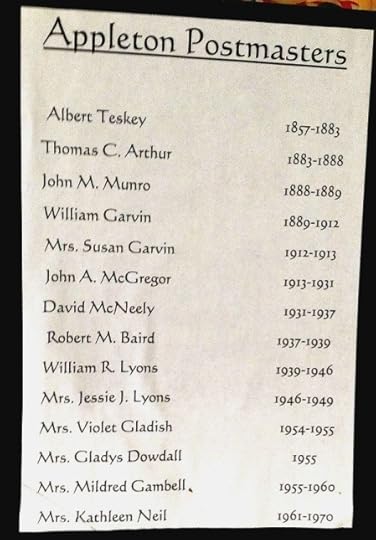
A beautiful Communion Table, crafted in wood, is preserved at the museum; donated by the Appleton United Church.

A country museum would not be complete without an exhibit showing a typical General Store.

This General Store features a large collection of vintage glass bottles. Ed mentioned that he was an avid bottle collector, a hobby that is becoming popular around the world. It was particularly interesting for us to see bottles from the former Wampole factory in Perth.
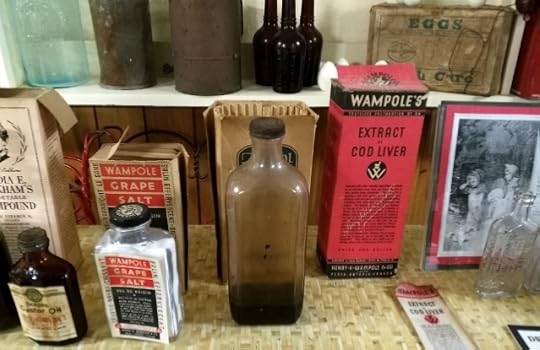
Some people say they can never own enough shoes! It was interesting to see the types of shoes that were available in days gone by, and how styles have changed over the years.

The variety of vintage tools and farm implements on display, is a fine example of the types of materials that were used in the crafting of these every-day items. Rather than being mass-produced, many were hand-made using a hammer and forge.
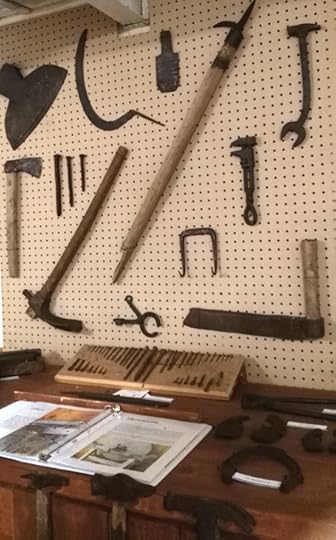
To keep the tools, axes, and knives sharp, a grinding wheel was used –
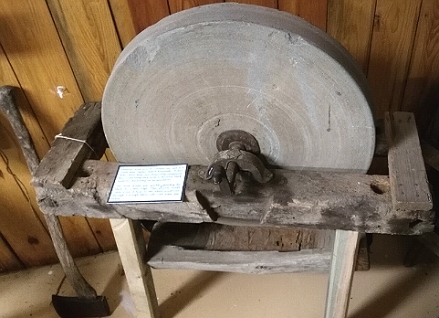
…………………………………………………………………………………………………………………………..
When our tour of the museum was over, it was time for my presentation on using Genograms in your family tree.
…………………………………………………..
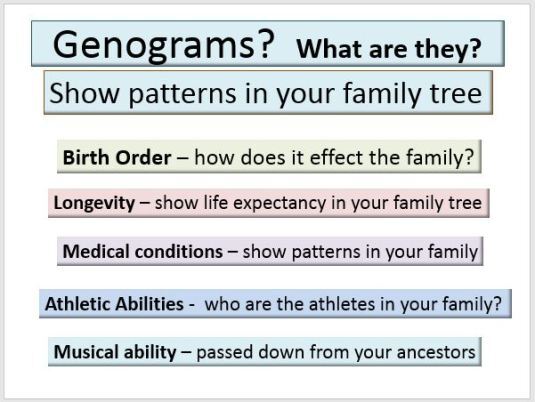

Personality traits such as leadership, negotiation skills, or even creativity, are sometimes influenced by our birth order in a family.
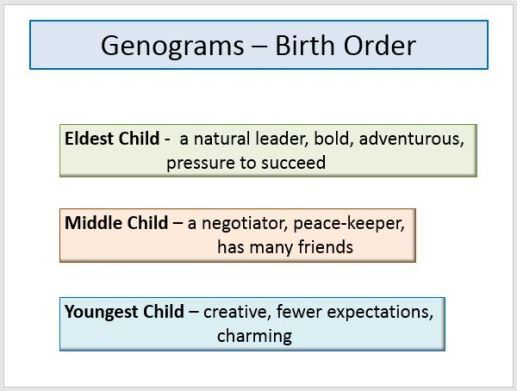
In my presentation I showed examples of how musical ability, athletic ability, medical conditions, and even I.Q may be passed from one generation to the next.
Below, is one example of a family tree genogram, showing I.Q as a genetic trait, being passed on from generation to generation, in the family of Marie Curie, double Nobel-Prize winner.

After the presentation, the museum provided some tasty refreshments, and many returned to the sweets table more than once to sample the variety of tasty offerings. Many stopped by my book table, and picked up a signed copy for themselves, or for gifts. It was a pleasure to chat with so many, and learn a bit about their family histories.
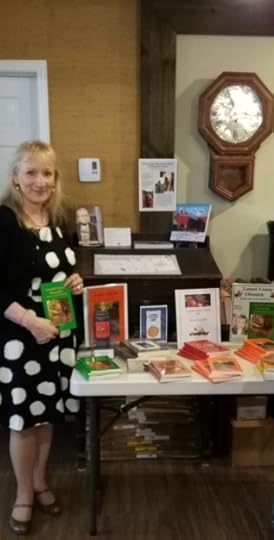
Before we headed home, Brian Tackaberry, of the North Lanark Historical Society, kindly presented me with a special gift, and thanked me for my visit to the museum.

What a lovely visit to the museum! Their collection is truly impressive. They are preserving precious artifacts from the past for future generations, and have displayed them generously, for all to enjoy.
Many thanks to Brian Tackaberry, Ed Wilson, and to all of the members of the North Lanark Historical Society for your kind hospitality. It was a pleasure meeting you, and also to meet Melissa Alexander who has assisted me in the past with research. A special thanks to former neighbour Grant Chaplin for stopping by!
Thanks also to those of you who came to hear my presentation, and to stop by my book table. It was a packed house, and so nice to see the extra chairs being brought in, and fill the space to capacity. Thank-you!
Until next time…..

The museum is currently open by appointment.
For more information on the North Lanark Regional Museum and links to their virtual exhibit:
http://www.northlanarkregionalmuseum.com/
…………………………………..
September 29, 2021
Irish Names & Surnames Explained
Traditional Irish Naming Patterns
Naming patterns are important when researching your family history. It has been a long standing custom in families around the world to name children after fathers, mothers, grandparents, important ancestors, relatives and friends. Middle names were often used for the preservation of a mother’s maiden name or the name of a prominent ancestor in that family. Names are very useful in tracking down lineages when there is little or no paper trail.
Names can give you clues to a person’s lineage, but other sources are still required in order to have genealogical proof. The Irish used a very particular naming pattern for children for children born beginning in the mid to late 1700s and through to the early to mid 1900s. It is important to note that not all Irish families followed the pattern although enough of them did that you can often use first names to learn more about an Irish ancestor’s unknown lineage. As with anything in genealogy, this should be proven with supporting documention, but Irish naming patterns are often helpful while building your family tree.
Traditional Irish Naming Pattern:
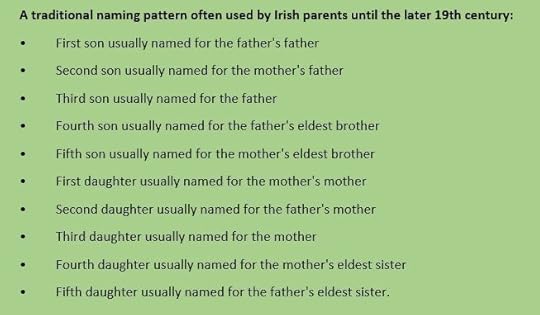
Naming Pattern Exceptions:
Naming patterns were sometimes affected by deaths in infancy. When a specific name was considered important within the family, the name would usually be given once again, to the next-born infant. In records, there are sometimes two or more children of the same name, baptized within the same family. Each baptism of this name, usually tells of the death of the older child of the same name.
Another example when the naming pattern is altered is when a child was stillborn, or very ill when born, or dying. Sadly, the child was baptized using a less-important family name, but the name of the paternal grandfather (or important ancestor) might be ‘reserved’ for a live birth, or for a child who was expected to live.
Surname Prefixes
Irish surnames of Gaelic origin were more common until Ireland fell under English rule. This led to the use of English versions of traditional Irish surnames. Many of these traditional names had prefixes:
“O”, “Fitz”, “Mc” and “Mac”
Mac or Mc – meaning “son of”
O – meaning “grandson of”
Fitz – meaning “son of” was sometimes substituted for the prefix ‘Mac’ or ‘Mc’ by many of the descendants of Anglo-Norman invaders.
For a period of time, English law in Ireland forbade the use of “O”, “Mc” and “Mac”, although “Fitz” was allowed. When researching your family name be aware that a name like Connor could have once been O’Connor.
The prefix O’ is unique to Ireland. It originates from the Gaelic word “ua,” meaning “grandson of.” Any name beginning with O’ is without question an Irish patronymic (from a male ancestor). The O’ surnames began in the 11th century in Ireland, before the Mc/Mac surnames. Examples of these surnames are O’Sullivan, O’Connor, O’Brien, and O’Leary.
Mc or Mac?
There is a myth about Scottish and Irish surnames that begin with the prefix Mac- or Mc-, that Mac- (as in MacDonald – son of Donald) designates a Scottish and Protestant heritage, where as Mc- (as in McCormick – son of Cormac) denotes an Irish Catholic family name. In fact there is no difference between these two prefixes. They may be either Irish or Scottish in origin and spelled different ways, with either prefix, even within the same family.
Mac- and Mc- both come from the Gaelic word “meic,” meaning “son of.”
“Micks”
In the early days of Irish settlement in Canada, such a large number of Irish names carried these prefixes that it became an ethnic slur for the Irish people to be called: “micks.”
Surnames that Describe the Profession of the Father
Some names beginning with Mc or Mac described the profession of the father.
MacMaster -“son of a master or religious leader”
Macpherson – “son of the parson,”
MacWard – “son of a poet or scribe,”
MacKenzie – “son of the fair one,”
MacDuff – “son of the dark one,”
McDowell – “son of the dark stranger.”.
Some families chose to conform to English laws, and some didn’t, which led to surname variations within the same family. Often Irish who emigrated dropped the prefixes when they arrived at their new countries of residence.
Top 200 Surnames in Ireland
Given Names and Meanings –
– BOYS
Given Names and Meanings
– GIRLS

Researching Your Irish Roots
Don’t forget Nicknames
Most given names in Ireland have at least one associated nickname. When names are recorded in birth, marriage, and death, or in church records, a nickname may have been used instead of the given name (Kate for Catherine or Billy for William, for example). Many nicknames are easy to spot, but others are less well known. For example, the nicknames used for Bridget include Bedelia, Bess, Bessie, Biddy, Breda, Briddy, Bride, or Bridie.
Nicknames may also lead the researcher astray if incorrect assumptions are used. While some might assume that Anty is a nickname for Anthony (a male), it is, in fact, more likely a nickname for Anastasia (a female). Lou is both a nickname for male children named Aloysius, Lewis/Louis, and Ulysses as well as female children names Louise or Lucinda or Mary-Louise, or Mary-Lou.
In conclusion, while naming patterns weren’t always followed exactly (for example if there were only one or two children, the father’s relatives always took precedence in the naming of the children), they were usually followed closely.
Remember, if you have an Irish ancestor, and don’t know anything of their parentage, you can use naming patterns to help in your search.
Best of luck researching your Irish ancestry!
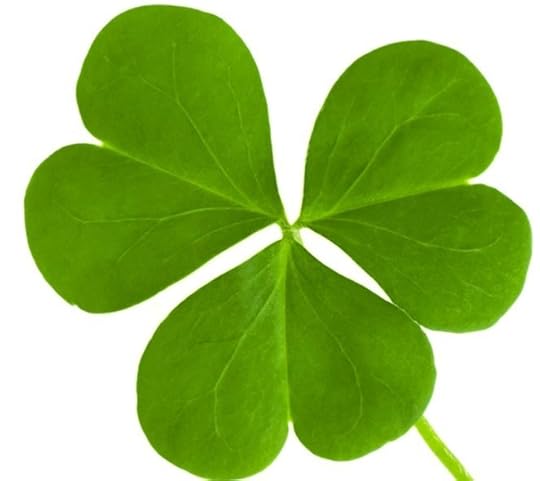
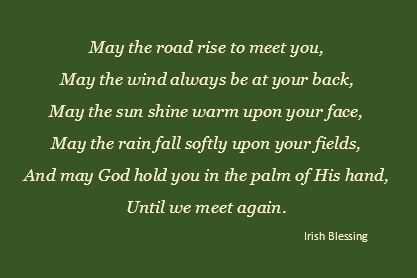
Sources:
De Breffny, Brian. Guide on Irish Christian Names and their English equivalents. Article Christian Names in Ireland found for years 1670-1850. The Irish Ancestor, Vol.1 No. 1, pages 34-40.Coghlan, Ronan. Irish First Names. Belfast, Ireland: Appletree Press, 1985.Ó Corráin, Donnchadh, and Fidelma Maguire. Irish Names. 2nd ed. 1990. Reprint. Dublin, Ireland: The Lilliput Press, 1992.MacLysaght, Edward. The Surnames of Ireland. 6th ed. Dublin, Ireland: Irish Academic Press, 1985.Matheson, Sir Robert E. Special Report on Surnames in Ireland [Together with] Varieties and Synonyms of Surnames and Christian Names in Ireland. 1901. Reprint. Baltimore, Maryland: Genealogical Publishing Co., 1968.You May be Irish if…
My Mother, she was Orange…..and my Father, he was Green
Irish Settlers & the Ghost of Burgess Township
Drummond Pioneer Irish Boxty
Irish Christmas in Lanark County
January 6th – Irish Women’s Little Christmas
Irish Hallowe’en in Lanark County
September 27, 2021
UFO Sightings In Lanark County
Since the infamous sightings in Roswell, New Mexico in 1947, people across North America have become more aware of strange lights, and unusual objects, in the night skies.
By the late 1960s in Perth Ontario, details of sightings were published in the local papers, and many credible witnesses reported their accounts of these strange events.
Flying Saucers With Red Lights Over Port Elmsley Confirmed by Perth OPP


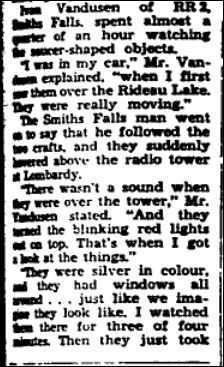


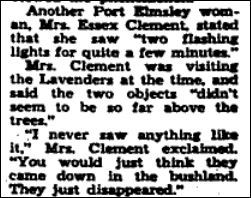
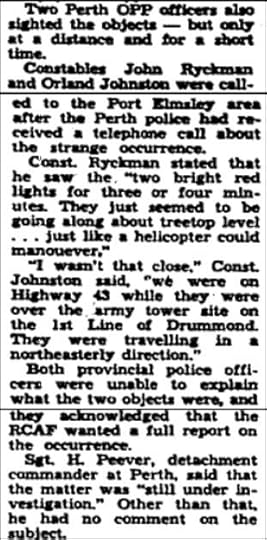
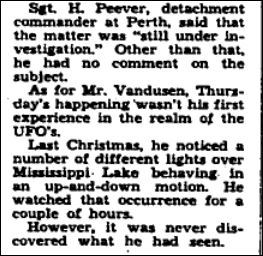
The night skies in Eastern Ontario became very active in the summer and fall of 1973, and some organizations reported that it was one of the largest number of U.F.O. sightings over North America, calling it the ‘Autumn of Aliens’.
Huge Chunks of Ice Fell from the SkyIn Lanark County, it all seemed to begin with a sudden hailstorm, on the Friday the 13th of July. The hailstorm came out of nowhere, and huge chunks of ice fell, many almost three inches in diameter. Hundreds of windows and car windshields were smashed by jagged pieces of ice. A Smiths Falls resident was cut on the head by a chunk of falling ice, and required seven stitches. No one was seriously injured, although there were a few farmers that got caught outside, working in the fields, and had to seek shelter from the large chunks of ice falling from the sky.

Barely 48 hours after the hailstorm, police departments in Perth and Smiths Falls received a number of calls from residents, claiming to have seen flying objects in the sky.
Flying Object Seen Near BaldersonA local man reported that he and five others were on the Eighth Line near Balderson at 9:30 p.m., when a flying object appeared to be travelling south to north, then returned to the south. He observed that it was quite large, shaped like a tart. Another report came in from a resident of Sherbrooke Street in Perth, who saw the same object overhead. He said that his dog had howled constantly while the object appeared in the sky.
CJET Radio holds call-in show due to large number of UFO SightingsSo many people had observed the same object that CJET radio station in Smiths Falls held a call-in show the following Monday, so that people could phone the show, and share reports of what they had seen.
Sparkling Yellow-Orange Light Over Perth

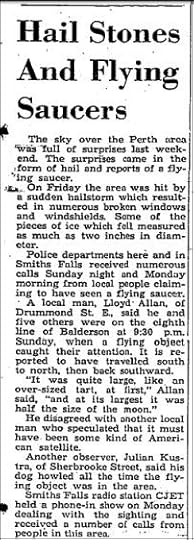

The next UFO sighting to be reported in the fall of 1973 took place in Beckwith Township. A young man was returning to Perth from Ottawa, driving along Highway 7 near Carleton Place, when his headlights suddenly went out. Concerned that he might be pulled over by the police with his headlights out he decided to take the back way, and turned onto Tennyson Road. The section of the road closest to Perth has swamp on both sides, and the lad noticed two large lights in the sky, hovering over the swamp. The object was in the sky just above the tree line. He pulled the car over to the side of the road, and as he stopped the car he noticed that the object stopped as well, and hovered over the swamp. He remained parked for a few minutes, and then started to drive again. When he began to move, so did the object, and it travelled parallel to him for a few more minutes, then disappeared. Early the next morning, when he pulled out of his driveway in Perth, his headlights were working again.

Another sighting in the late summer of 1973 was first reported by a young lad working at a gas station in Smiths Falls. He spotted a small sphere in the sky that appeared to be hovering in one fixed location. He reported seeing silver flames coming from both the top and the bottom of the craft. The lad was quick to call CJET radio station, and ask if anyone else had seen the odd sphere in the sky. The radio station confirmed that yes, indeed; they could see it as well. In the days that followed, at least 40 people in the Smiths Falls area came forward, stating that they had seen the object as well.
…and in the Ottawa area in 1973:
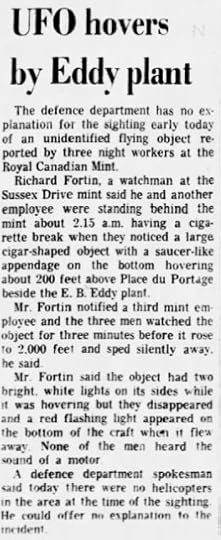
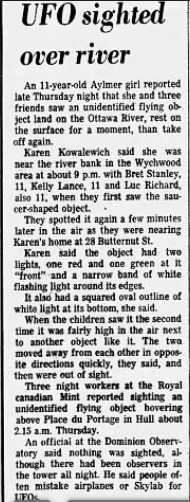
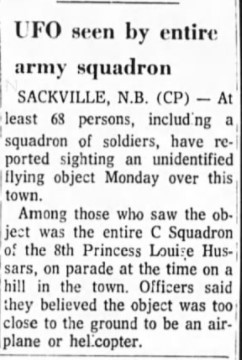
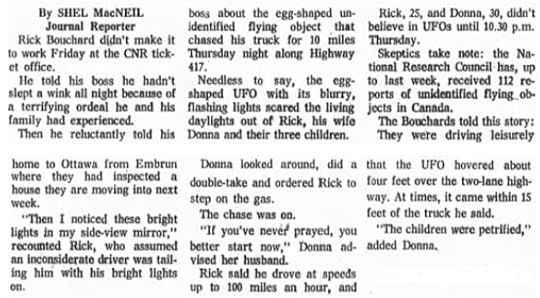
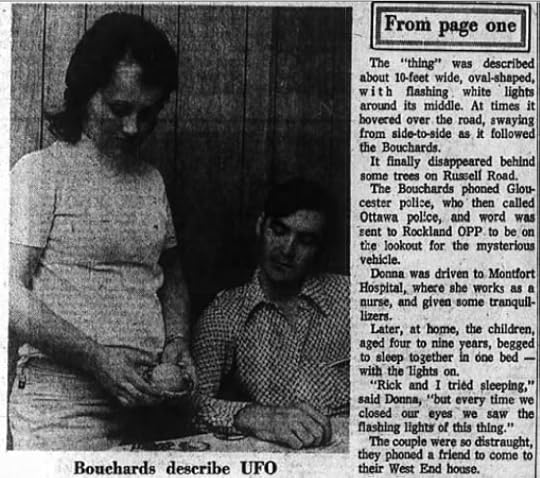 “The Ottawa Journal”, Nov. 10, 1973, p. 1 & 2
“The Ottawa Journal”, Nov. 10, 1973, p. 1 & 2

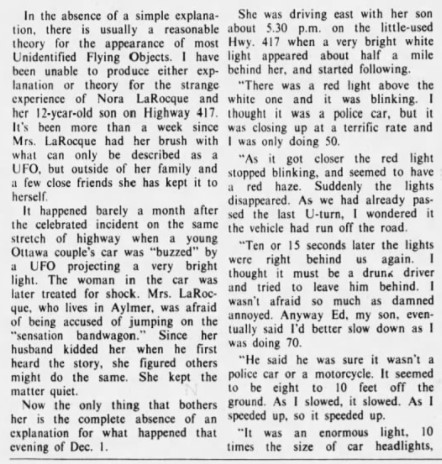
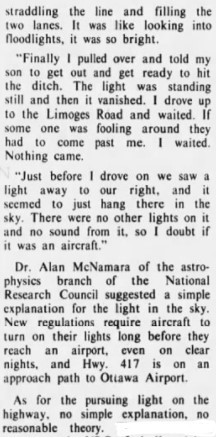
In the summer of 1974 people were once again talking about another strange object in the sky. It was a typical warm summer evening on the Rideau Lakes, and there were cottagers and residents alike, who saw more than they bargained for, on the night of August 12th. At around 10 p.m., many were sitting outside, enjoying the call of the loons, and listening to the water lapping on the shore. Suddenly, high in the night sky, a cigar-shaped object appeared. Some described it as a long, flat shape, orange in colour. Many said that it was more red than orange, and was shaped like a sphere. Everyone that saw it agreed that it was silent, and it hovered over the Big Rideau Lake, on the south side of Horseshoe Bay, for several minutes, and then vanished.

It wasn’t just in the Perth area that strange objects and lights appeared in the sky. Several residents of the town of Brockville, including some local police officers, confirmed the sightings of some odd lights moving in the night skies.

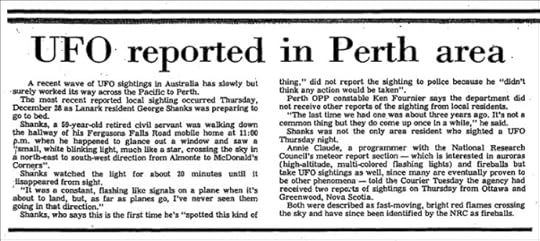

Strange sightings of unidentified flying objects were recorded in the Perth area as early as the late 1950s. Fiery balls of light, objects moving up and down, back and forth, quickly, in ways that airplanes were not able to maneuver.
UFO Tracking StationEstablished near OttawaUFO tracking stations were established just outside of Ottawa, and rumours of government radio towers and underground facilities were heard up and down the concessions in Lanark County. Excavations were reported near Almonte, and government agents were testing the soil on several farms in Ramsay Township.
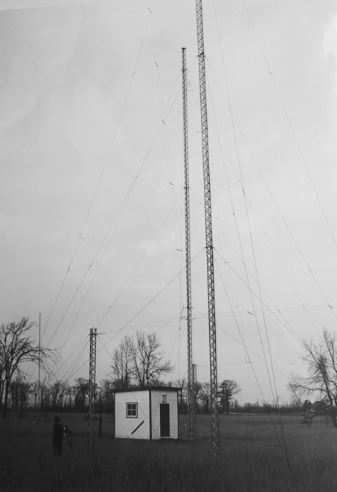
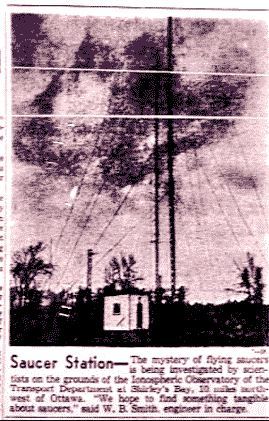
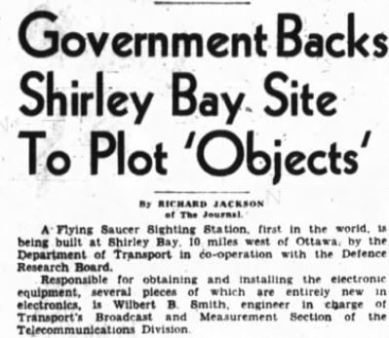
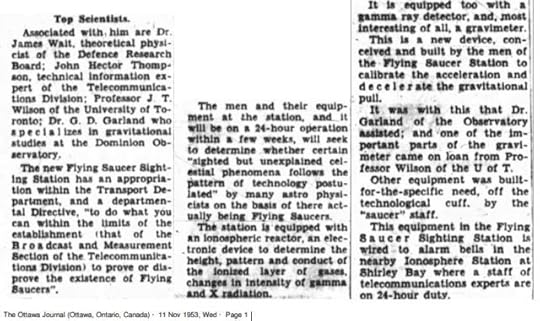
When reporters attempted to investigate further, the government representatives denied all, despite the fact that local men were working as labourers on many of the projects and could confirm what they had seen.
“On August 8, 1954, Smith, and his team at Shirley’s Bay recorded a disturbance, they believed was caused by a UFO. Among the observations that day were transmissions being received too rapid for a trained operator to decipher.”
December 26, 2018, ‘The Ottawa Citizen’ p. A6Just days later, ‘Project Magnet’, as it was known, was disbanded, without explanation.
……………………..
For more information on strange sightings in the night skies over Lanark County, and the government’s classified projects in the 1960s and 1970s, read the full story ‘Perplexed in Perth’, from “Lanark County Classics: A Treasury of Tales from Another Time”, ISBN 978-0-9877026-54
Available at local bookstores, or online
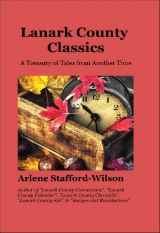
September 23, 2021
Lanark County Quilting Legends – of the 1950s, 60s and 70s

Almost every family had one – a quilter; someone who could take random bits of cloth, even scraps or rags, and turn them into a work of art. They were the creative ones; usually the quiet ones, sitting off in a corner, away from the crowds, working on their quilting blocks, embellishing their squares of cloth with embroidery, and intricate stitchery. They were the serious ones, labouring with precision, ensuring that their stitches were evenly spaced, even in places hidden deep within the seams of the cloth.
These quilters were the unsung heroes of home crafting. Blessed with nimble fingers, tireless hands, and meticulous sight, they turned the family’s cast-off clothing and abandoned fabrics into beautifully designed bedcovers; fit for the coldest Eastern Ontario winters. Often young, inexperienced hands worked alongside older, farm-weathered hands, at community quilting bees. The older ones were the masters, the coaches, and the instructors, guiding the young ones on the finer points of their art.

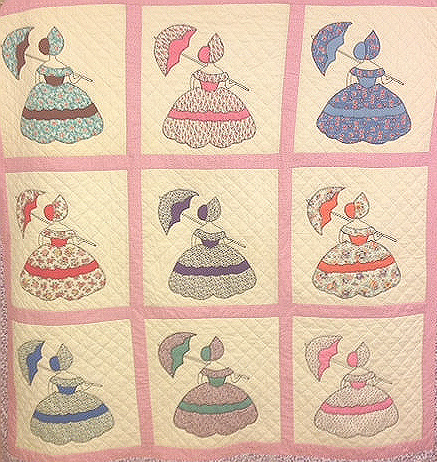
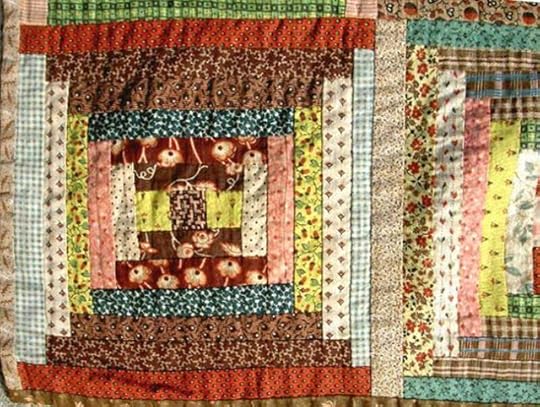

Many of these artisans were sociable, and organized quilting bees, welcoming all of the ladies in the neighbourhood. They assembled quilting frames, and set up sturdy, wooden chairs all around, inviting the experienced and the not-so-experienced, to join the circle.

There were lively conversations along with occasional laughter and story-telling, mixed in with the stitching. The quilting bees always ended on a high note – with hot tea poured lovingly into delicate china cups, served alongside decadent homemade cookies and squares.

A few quilted on their own, but many were members of local churches, community organizations, or Womens’ Institutes.
…………………………………………………………….
Eleanor Conboy’s Quilts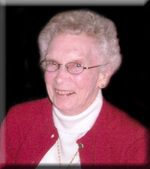 (Eleanor was the daughter of George Garrett and Edith Armstrong)
(Eleanor was the daughter of George Garrett and Edith Armstrong)Eleanor Conboy (1922-2015) was an avid quilter, and good friend to my mother. The Conboy family farm was not far from the Stafford home on the Third Line of Bathurst (Tay Valley Township) Eleanor Conboy and Audry Stafford often worked at the quilting ‘bees’ together, at neighbour Lottie (Charlotte Keays Jordan) Jordan’s house.
Many thanks to Trina McMillan Conboy for sharing the photos below, of some of Eleanor’s beautiful quilts!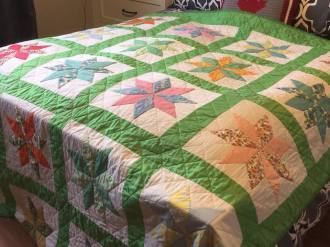
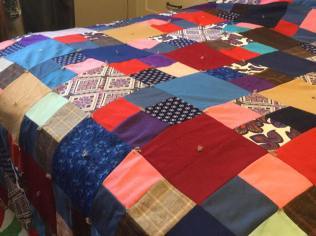
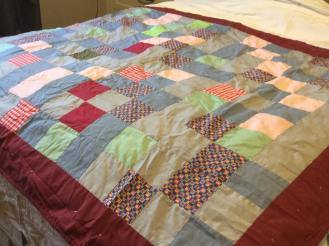
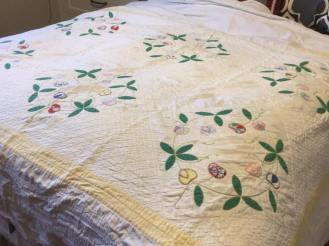
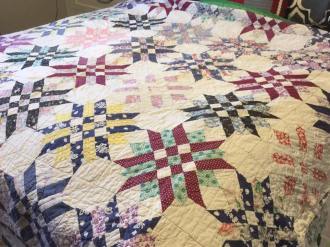
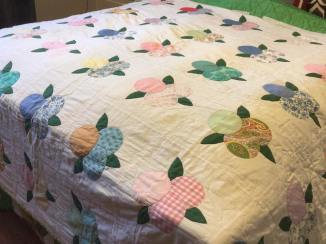
………………………………………………………………………………………………………………………………………………….
200th Anniversary Quilt- by the Lanark County Quilters GuildThis quilt was designed and produced by the Lanark County Quilters Guild to commemorate the 200th Anniversary of the pioneer settlement, and features a map of Lanark County.


One of the most beautiful quilts in Lanark County, was crafted by the ladies of Ferguson Falls, and features many of the local names on each square. Known as ‘The Shamrock Quilt’, it was donated to the Lanark Museum, and may be seen there, one of their treasured artifacts.
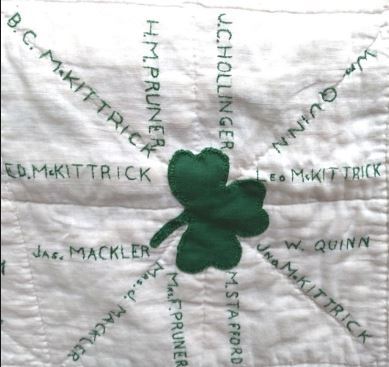
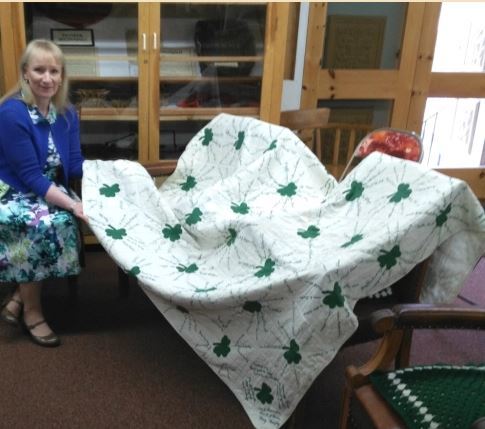
Balderson Women’s Institute
Bethel Women’s Institute
Calvin United Church – Calvinettes, and U.C.W
Drummond Centre Women’s Institute
Elphin community quilters
Flower Station community quilters
Glad Tidings Tabernacle Church, Ladies group, Perth, ON
Harper Women’s Institute
Hopetown community quilters
Innisville – St. John’s Women’s Association
Lanark – Catholic Women’s League
Maberly United Church W.A.
McMartin House, Perth, ON
St. John’s Church Perth – Catholic Women’s League, Perth, ON
Port Elmsley Women’s Institute
Rideau Ferry United Church Women’s Group
Salvation Army Church, Perth, ON
St. Andrew’s Presbyterian Church Women’s Missionary Society, Perth, ON
St. James Anglican Church, Perth, ON
St. Paul’s United Church, Ladies group, Perth, ON
Watson’s Corners U.C.W.
……………………………………………………………………………………..
The highlight of the year for many in farm country, was to enter quilts, sewing, needlepoint and other handy-work into the local fairs with the hopes of winning a first prize, second prize or third prize ribbon.

Many of us who lived in rural areas looked forward each year to the local agricultural fairs. Our mother, Audry Stafford judged the quilts at area fairs, and those as far away as Madoc and Tweed.



(missing text – First Place awarded to Gladys Haughian)
Whether quilts were entered in the local Fairs, raffled as church fundraisers, or created to keep family members warm on those cold Lanark County winter nights, – they each had their own unique beauty.
Some area quilters were known for their meticulous stitching, their creative designs, or how quickly they could complete their work.
Some quilters were so skilled that they even made the headlines of the local newspapers.
……………………………………………………………………………………………………………………………………………
The Port Elmsley Womens InstituteCompletes Quilt at One Sitting ! ! !……………………………………………………………………………………….
Do you remember some of Lanark County’s Quilters of the 1950s, 60s and 70s?Mrs. Ralph Affleck
Mrs. Alexander
Mrs. Elsie Anderson
Mrs. Ralph Barrie
Mrs. E. Benedict
Miss Jean Blair
Mrs. Bothwell
Mrs. Boyce
Mrs. F.J. Byrne
Mrs. Mildred Briggs
Isobel Cameron
Lillian Cameron
Marguerite Cameron
Mrs. Stewart Cameron
Mrs. Walter Cameron
Mrs. Joseph Chamney
Mrs. Charlton
Mrs. R. Charlton
Mrs. Churchill
Eleanor Conboy
Mrs. Conlin
Mrs. Cooper
Mrs. Charles Crampton
Mrs. George Crampton
Mrs. Clarke Devlin
Mrs. Cecil Dobbie
Mrs. Hilda Donnelly
Mrs. M.J. Donohoe
Mrs. Barbara Dowdall
Mrs. Betty Dowdall
Mrs. H. Duby
Mrs. Clarence Ennis
Mrs. H. Ferguson
Mrs. Dave Foster
Isobel Foster
Marlene Foster
Mrs. B. Fournier
Heather Fournier
Mrs. M.J. Furlong
Maria Fyfe
Miss Mae Gallinger
Mrs. Gamble
Mrs. Clifford Gardiner
Mrs. Lillian Gardiner
Mrs. Oliver Gardiner
Mrs. Thomas Gardiner
Mrs. Adam Geddes
Mrs. Aldon Gray
Mrs. Beverly Hall
Mrs. Earl Hallaren
Mrs. Charles Hermer
Mrs. George Ireton
Mrs. A. Ireton
Mrs. Harry Ireton
Joan Irvine
Mrs. James
Charlotte ‘Lottie’ Keays Jordan
Marion Jordan
Mary Jordan
Mrs. Edward Joynt
Mrs. Kennedy
Mrs. W.P. Kilfoyle
Mrs. Keith Knapp
Mrs. James King
Mrs. Violet Kirkham
Ethel Korry
Mrs. John Larmon
Mrs. Manion
Mrs. C. Matheson
Eleanor McInnis
Mrs. Alex McIntyre
Mrs. McPhee
Mrs. Charles Miller
Edith Miller
Mrs. Ernest Miller
Mrs. Forrest Miller
Mary Miller
May Miller
Mrs. Robert Moodie
Mrs. Eleanor Munroe
Miss Ursula Murphy
Mabel Palmer
Mrs. John Pennett
Mrs. Thomas Phelan
Mrs. Lester Polk
Mary Popplewell
Mrs. Ed Rathwell
Mrs. John Reid
Christine Rice
Florence Rice
Miss Jean Riddell
Mrs. Norman Richardson
Jean Scott
Dorothy Scragg
Eleanor Senkler
Mrs. H. Shaw
Mrs. A.M. Sheppard
Miss Elspeth Smith
Mrs. Somerville
Miss Spence
Audry Stafford
Mrs. Frank Stead
Mrs. Harold Stead
Mary Stewart
Mrs. Stokes
Mrs. E. Thompson
Madge Thompson
Bertha Toutant
Mrs. John Vanden Bosch
Mrs. George Wales
Mrs. Mabel Walroth
Mrs. H. Warwick
Mrs. Sadie Watson
Mrs. Allan Weidenmaier
Mrs. Fred Weidenmaier
Mrs. W.G. Weir
Mrs. Wilfred Wesley
Alice White
Mrs. J. White
Mrs. Roy White
Mrs. Murray Wilson
…………………………………………………………
…………………………………………………………………………………………………………………………..
15 Characteristicsof an outstanding Quilter:They possess the patience and commitment to complete a long-term project such as a quiltThey have the skill and precision to produce work with fine craftsmanshipThey have an artistic eye for good designThey have tremendous self discipline to produce consistent stitching throughout the pieceThey have a natural gift of creativity and originalityThey have a rare ability to see connections in patterns, and to draw ideas from many sourcesThey possess a high level of esthetic skills in order to situate patterns to set them off to their advantageThey have the ability to focus on solutions, not on regrets. When they make mistakes, they learn from experienceThey experiment with open minds in order to improveThey meaningfully communicate with others in the quilting circle to share ideasThey create designs that have the power to withstand timeTheir works are easily distinguished from others of their own timeThey have the ability to portray light, perspective, color and spaceThey teach others and pass down their knowledgeThey inspire others to be the best they can be!These quilting legends of Lanark County passed down their knowledge, and left their legacy in the form of the beautiful quilts that they produced. They were the gifted artisans of their time, and will be remembered for their delicate stitching and colourful designs, works of art that will be handed down through families, for generations to come.
***If you remember a Lanark County quilter, or a quilting organization, (1950s-70s) that has not been mentioned in this article, please send their name in the ‘comments’ box below, and they will be added.
To view additional squares of The Shamrock Quilt, photographed at the Lanark Museum:
The Shamrock Quilt at the Lanark Museum
To learn more about the 200th Anniversary Quilt produced by the Lanark County Quilters Guild in 2016 and the celebration in Tay Valley Township:
200th Anniversary Quilt – 2016
To discover more about quilting in the 1950s, 60s and 70s in Lanark County, read “The Quilting Queens of Lanark County”, from “Lanark County Connections – Memories Among the Maples” ISBN 978-0-9877026-47
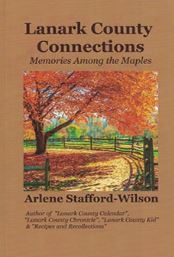
September 20, 2021
Election Night in DeWitt’s Corners 1963
Our parents always dressed up to vote. In those days, it was customary for men to wear a hat with their dress clothes, and so, along with his best suit, our Dad always wore his hat, and Mother wore her good ‘church’ dress, to our polling station at Cavanagh’s General store, on voting night.
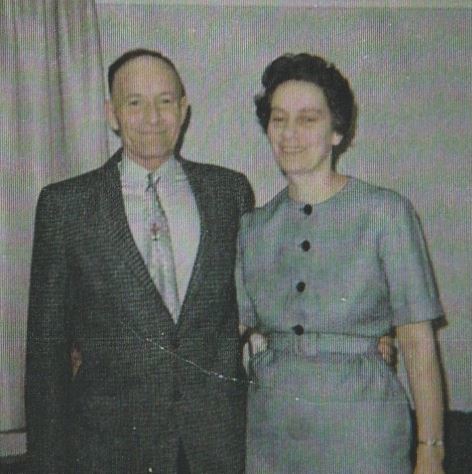
Our parents seldom voted for the same party, and lively discussions were commonplace at our house, in the weeks leading up to the election. It was very important to them to exercise their democratic right to vote. Both veterans of WWII, they were all too aware of many other countries in the world who did not enjoy this privilege.

Our father, having grown up near Ferguson Falls, Lanark County, in keeping with the long-held values of his community, usually voted for the Conservatives. My mother, on the other hand, seeking ideas and policies which aligned more with her particular vision of things, split her vote between the Liberals and the NDP, going back and forth between the two parties throughout the years.
As they left our house on many election evenings, dressed in their best, my father would always turn, tip his hat to us, with a mischievous smile and a wink, as they walked out the door, and he’d say, “I’m going to cancel your mother’s vote now.”

In the years that followed we would benefit greatly from hearing their debates in the weeks and months leading up to an election. We listened, as children will do, while our parents talked softly, or sometimes debated passionately, over a number of issues ranging from local policies affecting farmers and rural communities, to views on national matters affecting the entire country. It was a valuable education for us to hear these two WWII veterans discuss democracy and how voting was a privilege for Canadians, won through horrific battles fought on foreign soil. We also heard heart-wrenching stories about their friends and fellow soldiers whose young lives were cut short, never returning home to the green pastures and rolling hills of Lanark County.

 1963 Voter’s List
1963 Voter’s List
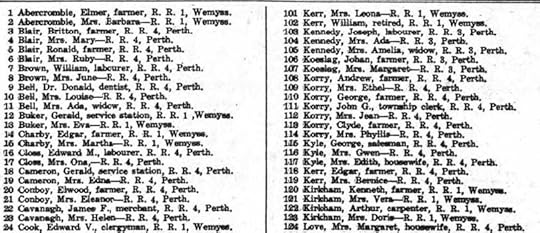





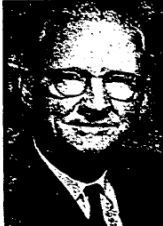
Occupation: Farmer
Doucett owned a farm, one mile from Carleton Place, in Ramsay Township, and also owned an insurance business
What were his issues?
-Every worker should have two weeks paid holiday
-New jobs to reduce unemployment
Art Stewart, Liberal
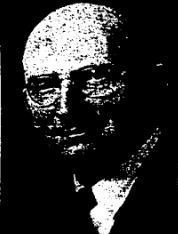
Occupation: Farmer, in Pakenham
What were his issues:
-Strengthen economics, and boost the undervalued dollar
-Ensure adequate pricing for farm goods
Jim Griffith, New Democratic
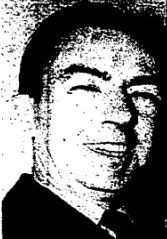
Occupation: stationary engineer, RCA Victor, Smiths Falls
What were his issues:
-Schools with adequate staff, and better curriculum
-Remove the financial barrier for higher education
Oscar Ventress, Social Credit
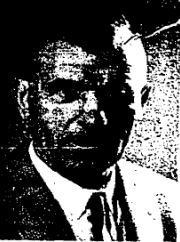
Occupation: not stated
What were his issues:
-Reduce taxes: All families with an income of less than $5,000 would be Income Tax free
-Prohibit the import of dairy products from other countries into Canada

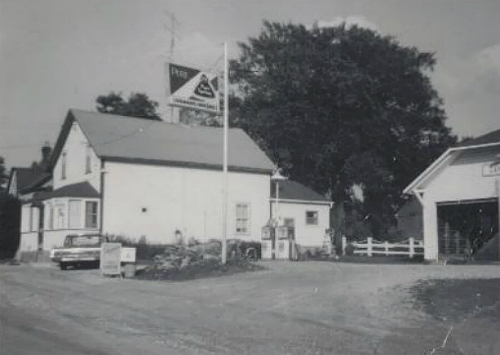

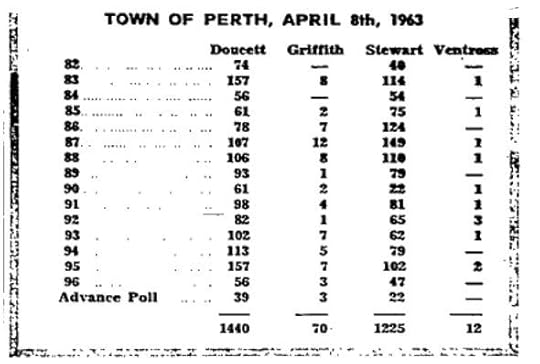
…………………………………………………………………………………………………………………………………………..
And who were the kids who lived around DeWitt’s Corners, waiting for their parents to return home after voting?Class of 1958 – S.S. # 4 Bathurst School – taught by Mary Jordan
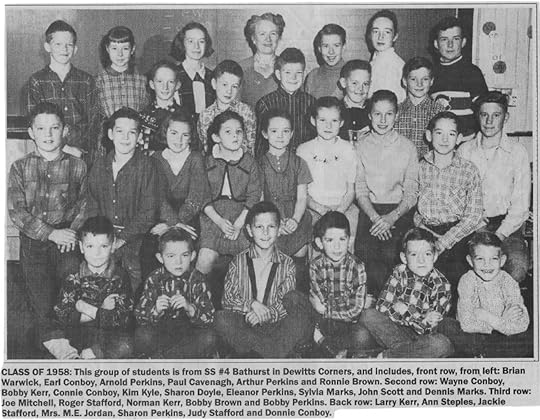
From the Past to the Present
…And so, the years went by, and we watched from the sidelines, as our parents dressed in their Sunday best, and headed out the door to vote on election night. We heard their lively discussions about the merits of his party, and her party, and we witnessed firsthand their enthusiasm as they left the house to go and exercise their right to have their voices heard, to participate in a free democracy, to cast their ballots.
Now it’s fallen onto this generation, and those that will follow, to pick up their torch, and head out the door when it’s time to vote, with the same enthusiasm and hope for the future that they possessed, and to always remember the ones who gave the ultimate sacrifice, so all of this would be possible.
Lest we forget.

Voter’s list: (Voters Lists, Federal Elections. R1003-6-3-E (RG113-B). 1963 – Library and Archives Canada, Ottawa, Ontario, Canada)
September 17, 2021
Mother’s Farmhouse Sourdough
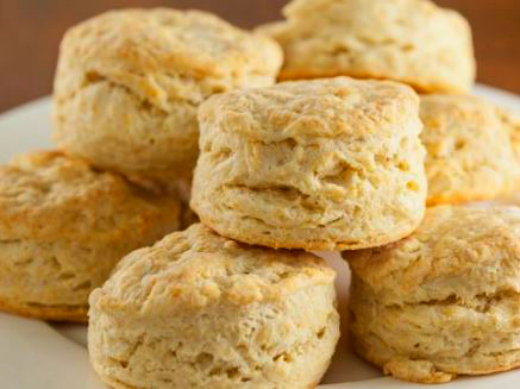
When the cool winds signaled the beginning of a new season, Mother’s thoughts always turned to baking her mouth-watering Sourdough creations.
She had a jar of ‘starter’ that she kept in the pantry. She’d often scoop some of the mixture out to add to her recipes, and it gave them a distinct, classic, sourdough flavour. Every week, without fail, Mother ‘fed’ the starter, by adding more flour, milk, and sugar.
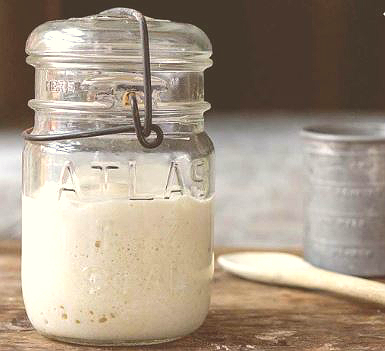
Each baker’s sourdough may have years of history, as the original batch is fed and re-fed each week, to keep it active. Sourdough creates a very individual taste, unique to each baker, depending on how often the starter is re-fed, including rest-times, air temperatures, and humidity.
OriginsSourdough goes back many centuries, and became popular in Western Canada, back in the days of the gold rush, in the Klondike. Conventional leavenings, like yeast and baking soda, were not very reliable in some of the harsh conditions faced by the prospectors.
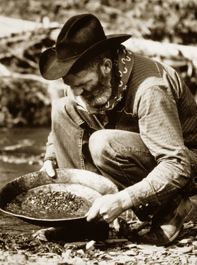
Miners and pioneer settlers often carried a small pouch of starter with them, so that they could bake bread in their less than ideal camps and shelters.
Mother used sourdough in place of yeast in many of her recipes, and it gave the food a wonderful, rich, flavour. Sometimes she shared a little container of starter, along with some of her prize-winning recipes, with the local women in DeWitt’s Corners, Glen Tay, and Christie Lake.
In addition to feeding the sourdough each week, some of the starter needed to be scooped from the jar, or the mixture would bubble up, and overflow. This seldom happened at the old farmhouse, where Mother baked almost daily.
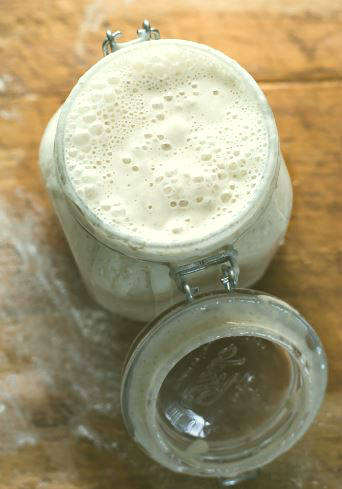
Make the sourdough starter at least two days ahead, and don’t forget to feed it once a week!
Mother’s Sourdough Starter(feed at least once a week to keep active)2 c all purpose flour
2 Tbsp. sugar
1 tsp. salt
2 c warm water
Mix in a non-metallic bowl
Cover with a tea towel and let stand at room temperature for two days
This becomes a spongy, bubbly mass, and develops a yeasty aroma
Refrigerate if desired, but not necessary, keeping the jar covered
Use starter for sourdough recipes
Once a Week: Add to the starter –1 c flour
1 c milk
1/4 c sugar
Add to the starter, and stir well.
Be prepared to use it often, or if you want to stop using it for a while, cover, freeze, then thaw, and feed again when you want to resume. Do not use for 24 hours after thawing.
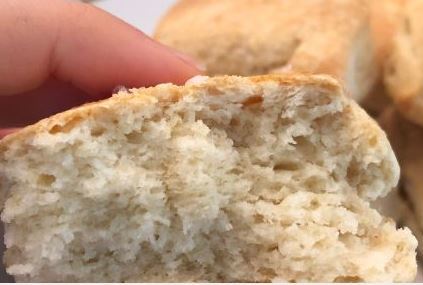
1 c sourdough (starter)
2 tsp baking powder
1 c flour
1/2 tsp salt
1/3 c vegetable oil
1/2 tsp baking soda
Mix well (until it comes away from the bowl)
Flour the board, and knead 12 times
Roll, and cut into biscuits
Allow to stand 15-30 minutes
Bake in middle of oven at 400 degrees for 10 minutes
(Raisins may be added)
For more sourdough recipes:Sourdough Pancakes, Sourdough Cinnamon Rolls, Sourdough Cheese Rolls, Sourdough Donuts, Sourdough Light Cake, Sourdough Coffee Cake, Sourdough Chocolate Cake, Sourdough Strudel Cake:
“Recipes and Recollections: Treats and Tales from our Mother’s Kitchen” ISBN 978-0-9877026-09(available in local book stores, and online)
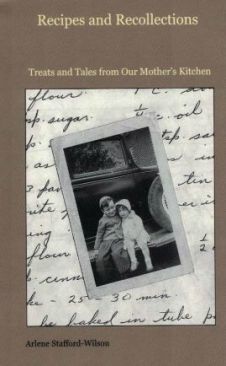
An excerpt from the story, “Mother’s Farmhouse Sourdough”, in “Lanark County Collection: Winding Our Way Down Memory Lane”

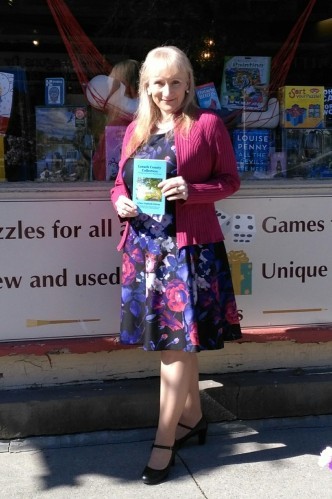
September 16, 2021
Lanark Sweaters: Soft as a Kitten
Each year, in the late summer, thoughts at our house turned to all the rituals associated with going back to school. This included inspecting last year’s clothing, shoes and boots, gathering up pencils and erasers for the inevitable homework that would take place at the big kitchen table, and checking to see if the old lunch pails were still intact. Some articles would be passed down to younger members of the family, and some things would have to be purchased new.
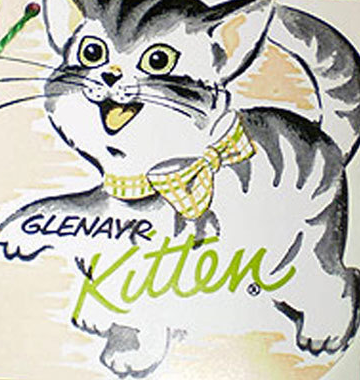
It was usually on a Saturday, the first or second week in September, that we made the annual trip to Lanark, to buy a couple of new sweaters at the Kitten factory outlet, and a new pair of shoes, maybe some new snow boots, at Gus Quinn’s store.
We drove down the Third Line, turned at Glen Tay, and headed up Highway 7, toward Lanark. The village of Lanark was a nice easy drive from our house – about twenty minutes or so. I suppose we could have done it in a bit less time, but Mother was never one to let Dad go over the speed limit; she was very strict about that and said that the laws were there for a reason. Dad would sometimes say that he ‘had’ to speed a bit, to burn the carbon off of his spark plugs, but Mother never fell for that, and she’d just give him ‘the look’, and he’d be back under the speed limit in no time.
After about ten minutes had passed, we’d be driving into Balderson. Sometimes Mother would stop and get some curd for us kids, and some old sharp cheese for Dad, but that was usually on the way back home from Lanark, so it wouldn’t spoil in the heat. We all knew the story of the giant cheese, made in Balderson, in 1893, for the World’s Fair in Chicago. The old timers said that it was six feet high, and weighed over 22,000 lbs. It was mostly butter and cheese that was produced there, when we were kids, and people would drive for miles around, even up from the States, because it was so good.
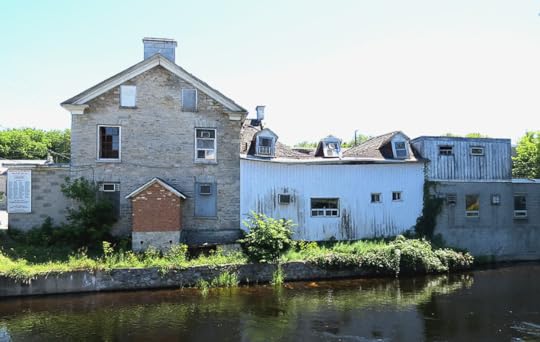
Another ten minutes or so and we’d be driving into Lanark. It was a pretty little village, built along the Clyde River. Mother said that it had been named for Lanarkshire in Scotland, and had been settled back in the 1820s, mostly by Scottish weavers and farmers.
Dad grew up on the family homestead, on the 11th concession of Drummond Township, not far from Lanark, and he often visited his Aunt Stacia, who owned a home in Lanark Village, right along the Clyde. Dad said that the Caldwell Woollen Mill, in Lanark, was a big employer back in the early days, but the building had been destroyed by fire. He said that there had been another huge fire in the late fifties, that destroyed many of the old original buildings in Lanark, and over 100 people had lost their homes.

After passing many of the homes and businesses along the main street, we finally arrived at 44 George Street, at the Glenayr Kitten Outlet. The business was started in 1944, by the Markle family, from Toronto, and Derek, son of the founder worked there as the superintendent of the mill. Some of the wool was already spun onto cones when it arrived from Scotland, and was knitted by circular machines. In 1951 they began to produce sweaters under the ‘Kitten’ label.

All kinds of sweaters were made at the Kitten mill, knitted with orlon, angora, mohair, lamb’s wool, or pure cashmere. There were a number of different styles– pullovers, cadet style, cardigans, ski styles, crew necks many different colours, zip front, turtleneck, six button, eight button cardigans, and alpine styles.
Glenayr Kitten also manufactured pantsuits, skirts, blazers, blouses and slacks.


Buttercup yellow cardigan sweater from the Glenayr Kitten Mill, c.1970s
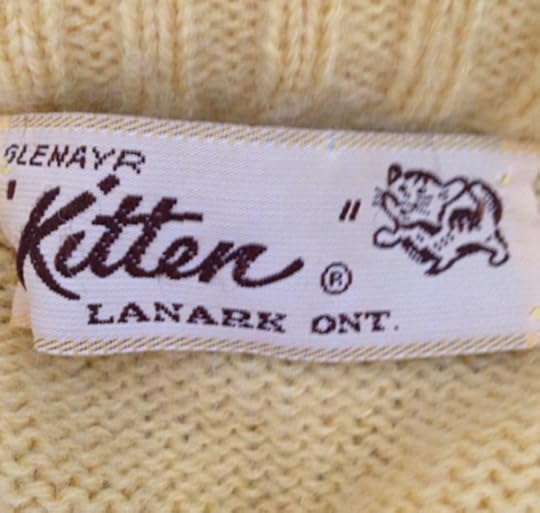

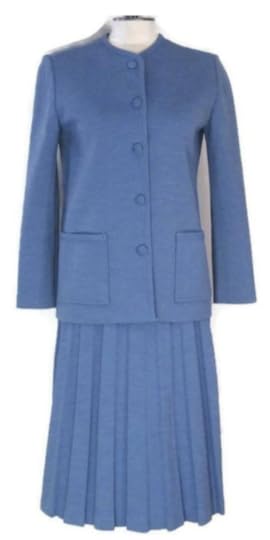


Workers at the Glenayr Kitten Mill stitch sweater pieces together
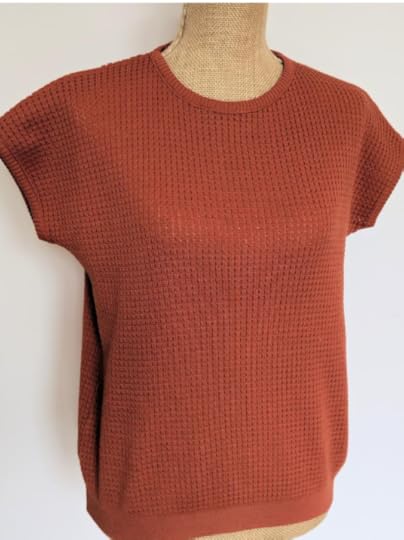

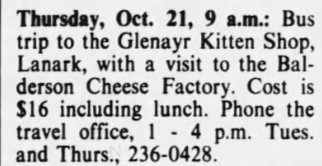
The Kitten Mill stores were a popular tourist attraction, and visitors traveled by motor-coach from Ottawa, Kingston, and the U.S.

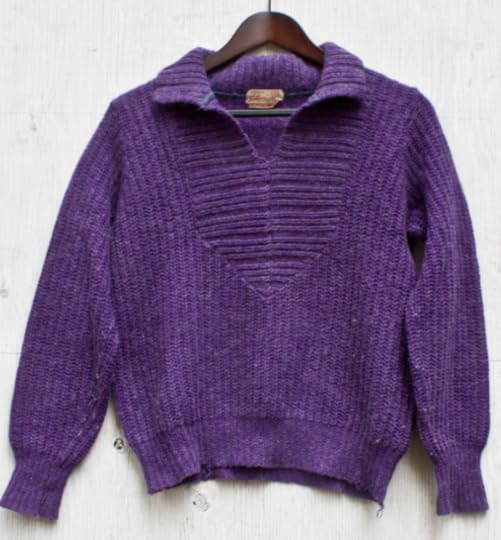
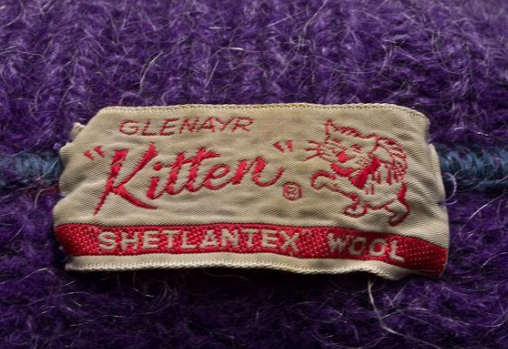

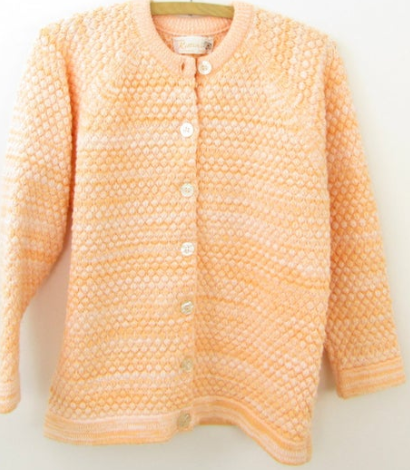

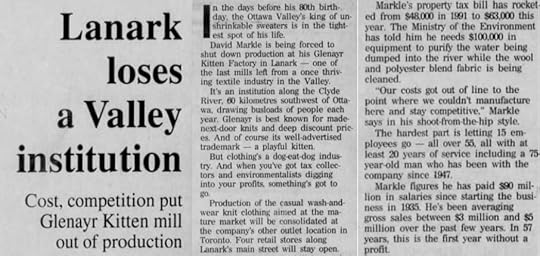

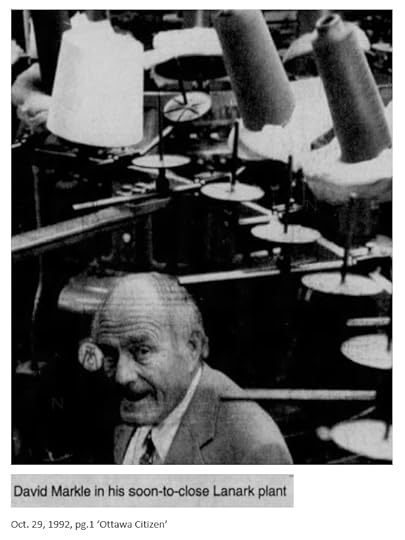

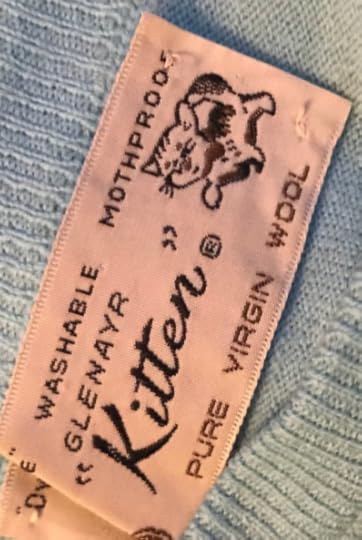
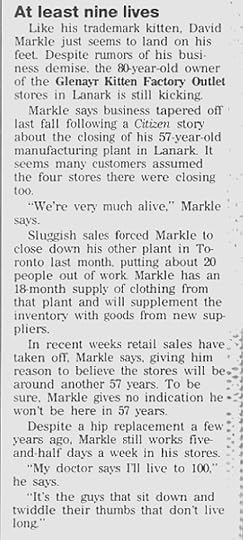


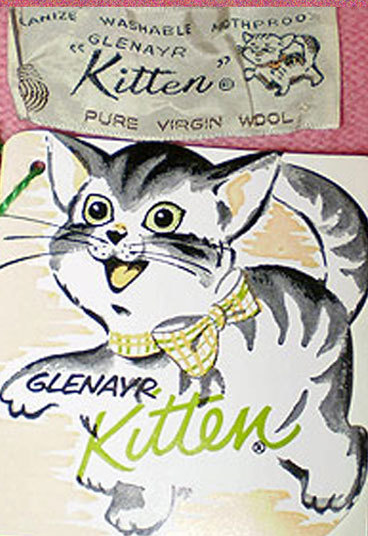





I think one of the things that attracted my frugal Mother to the Kitten outlet, was the fact that they sold ‘seconds’. They sold some sweaters that had small defects – without labels, and sold discontinued colours, ends-of-lines, and clearance items. The ‘seconds’ usually sold for between $4.50 and $12.00 at that time, so was very appealing when you were buying back-to-school clothing for a large family.
After a busy afternoon in Lanark, we’d head back home, with our new sweater ‘seconds’, ready for the new school year. Looking back, we were lucky to live such a short drive from the Kitten Mill, because the sweaters there really were lovely. Mother always found a way to add on the missing button, or to mend the seam that was beginning to unravel, so that you couldn’t tell that it was a second. Most of my Kitten sweaters lasted for years, because they were so well made, and were knitted with such high-quality yarns.
Sometimes during our visits to Lanark, I’d see huge, sleek, modern buses, pull up out front, and forty or fifty people got off the motor-coach, to shop at the outlets. I think many of them came all the way from Kingston or Ottawa. We didn’t realize it at the time, but people in the cities had already figured out that in our little corner of the world, folks had crafted their products with skills, passed down over generations, and they took great pride in what they manufactured.
Every spring, around the middle of March, we’d see city folks, suddenly appear around the Perth area, because they knew that the best tasting maple syrup came from Lanark County. It was also no secret that the finest tasting cheese in the world was made at the modest, little, factory in Balderson, and, if you wanted the highest quality sweaters, at a good price, and ‘soft as a kitten’, there was only one place to get them, and that was the village of Lanark.
(This story is dedicated to the people who worked at the Glenayr Kitten Mill. Many families had more than one member working at the Mill, and some worked for two or three decades, or more. Thank-you for producing the beautiful, cozy, sweaters, that kept us warm on those chilly days. You won’t be forgotten.
Thanks also to the Markle family, who provided work for the village of Lanark, and who kept their prices fair, so even those with a modest income could afford to purchase one of their high quality sweaters.)
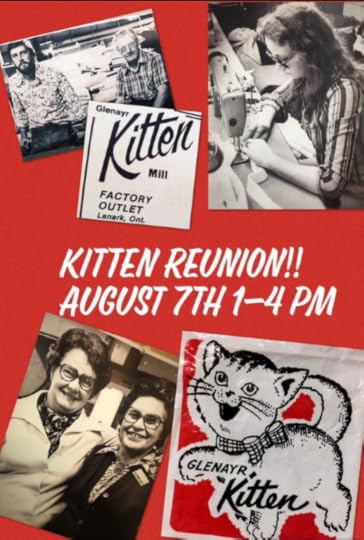
This story is an excerpt from – ‘Lanark Sweaters – Soft as a Kitten’ – from the book, “Lanark County Kid: My Travels up and down the Third Line” ISBN: 978-0-9877026-16
